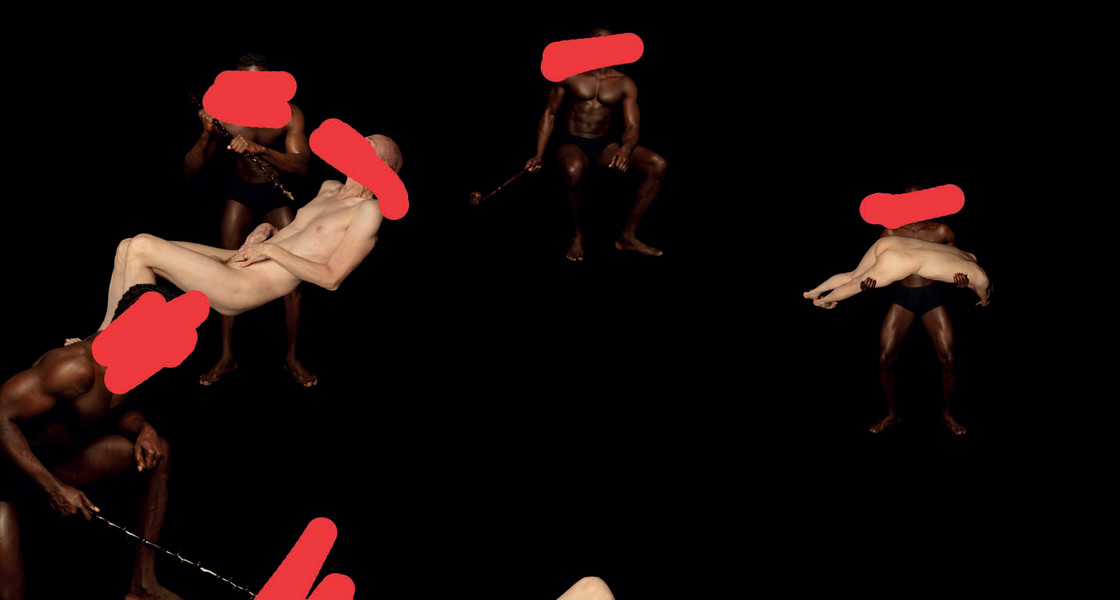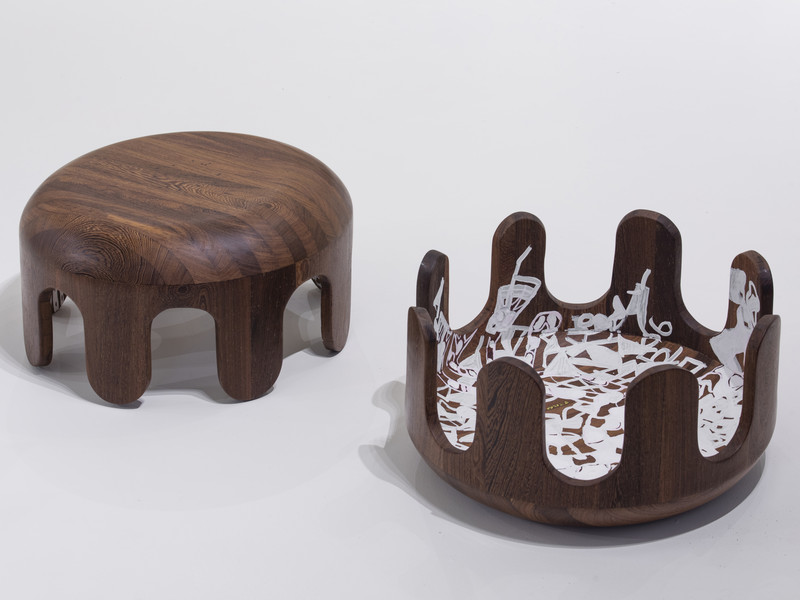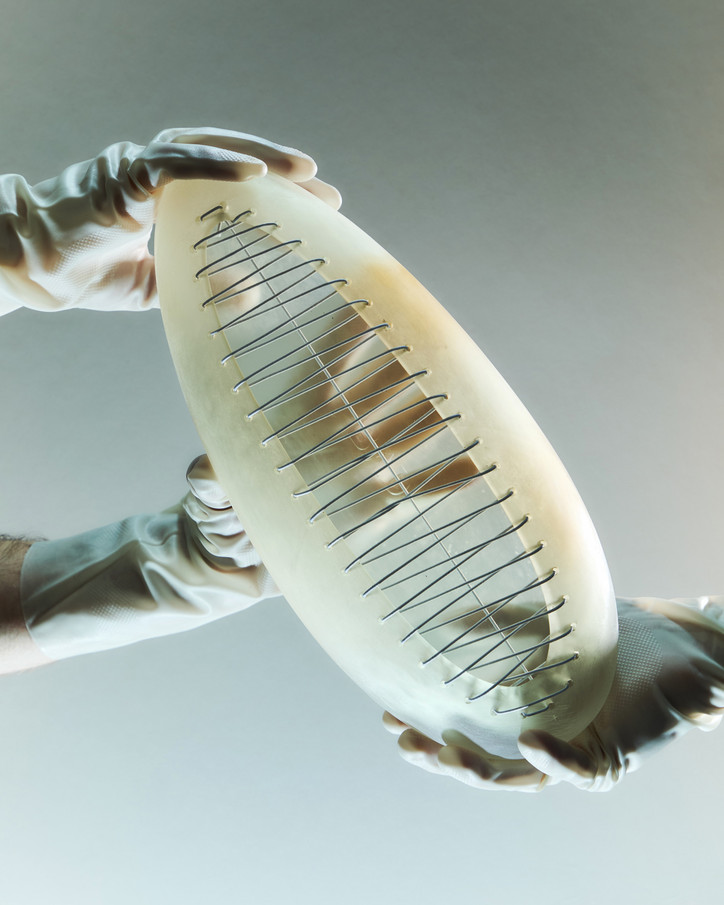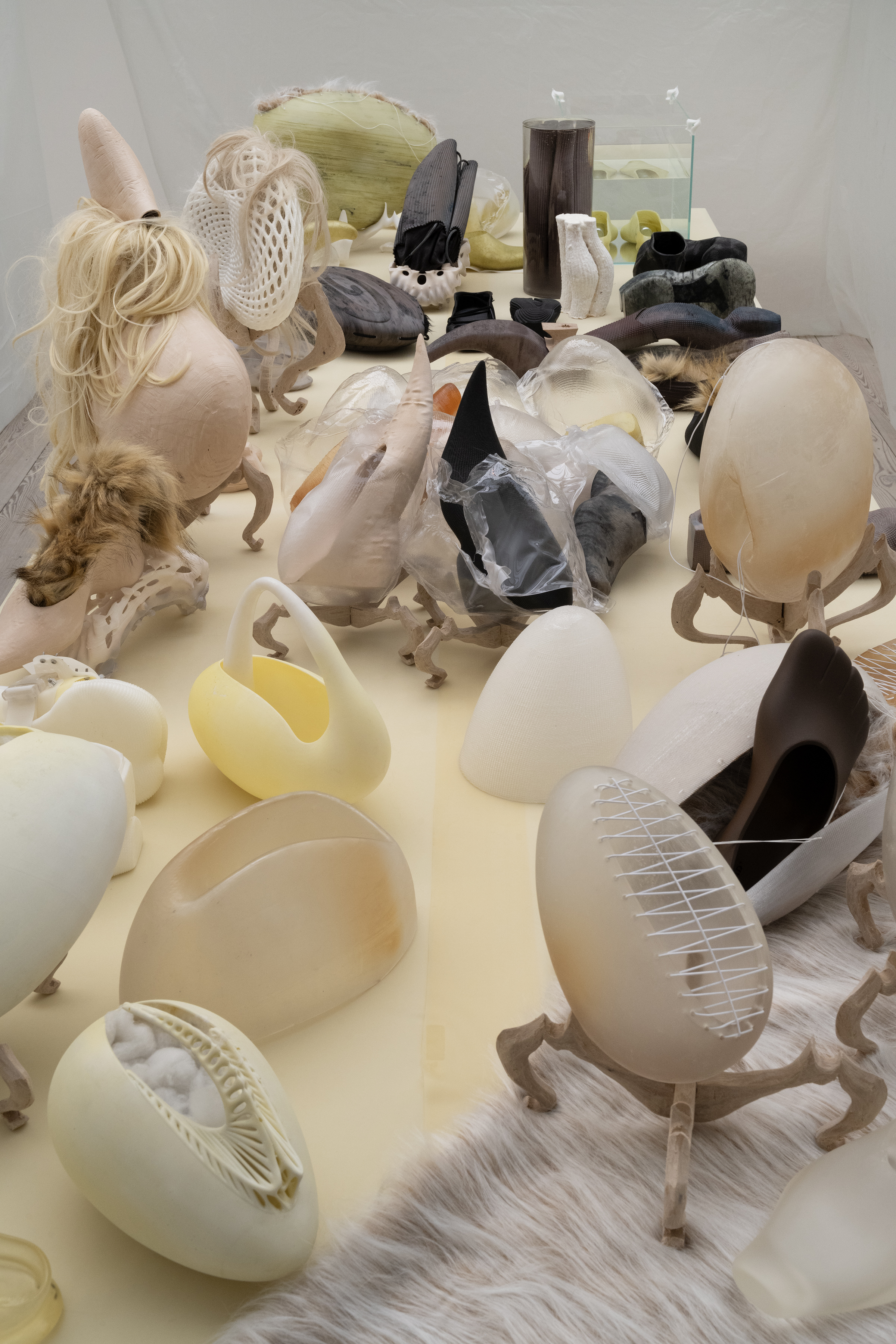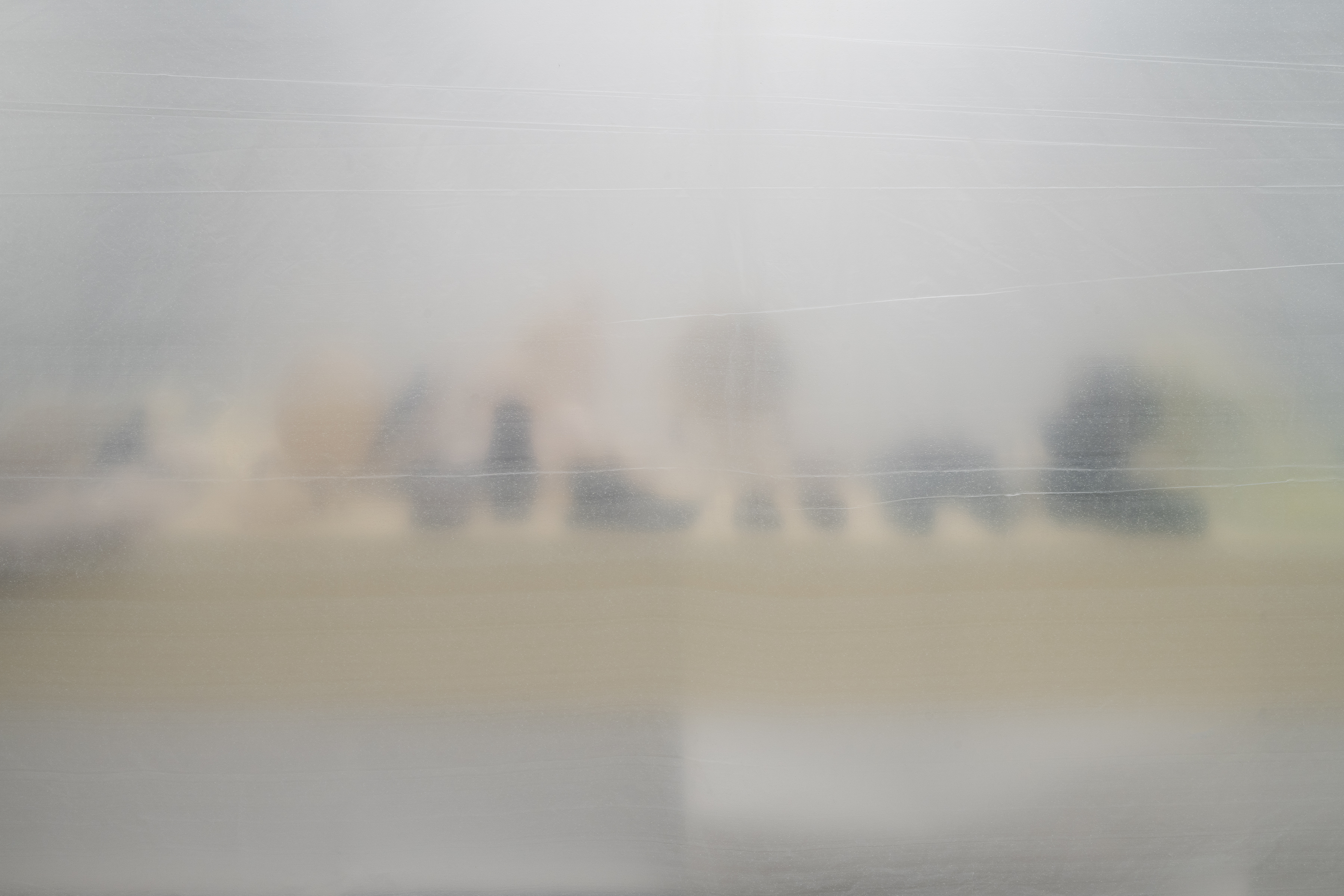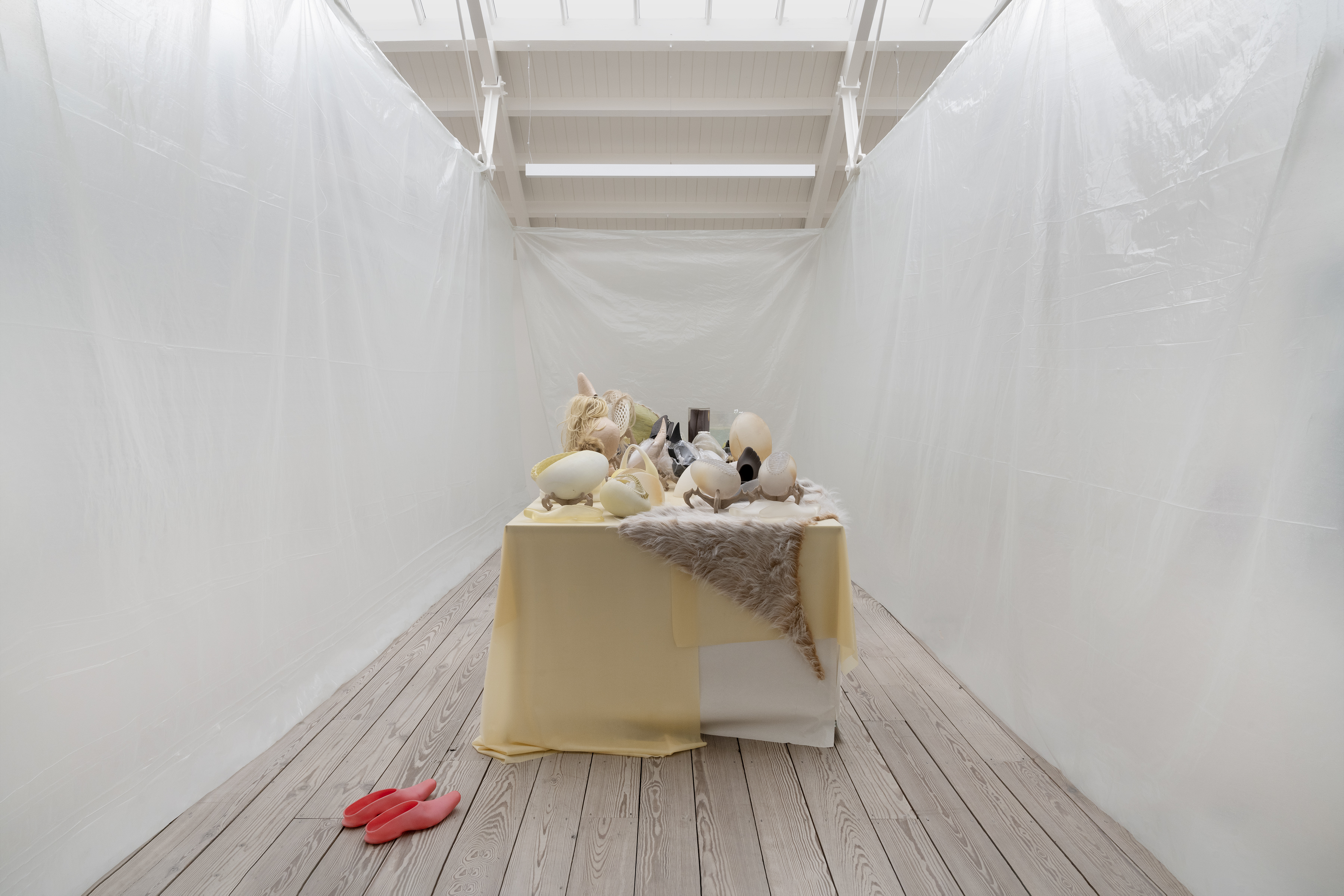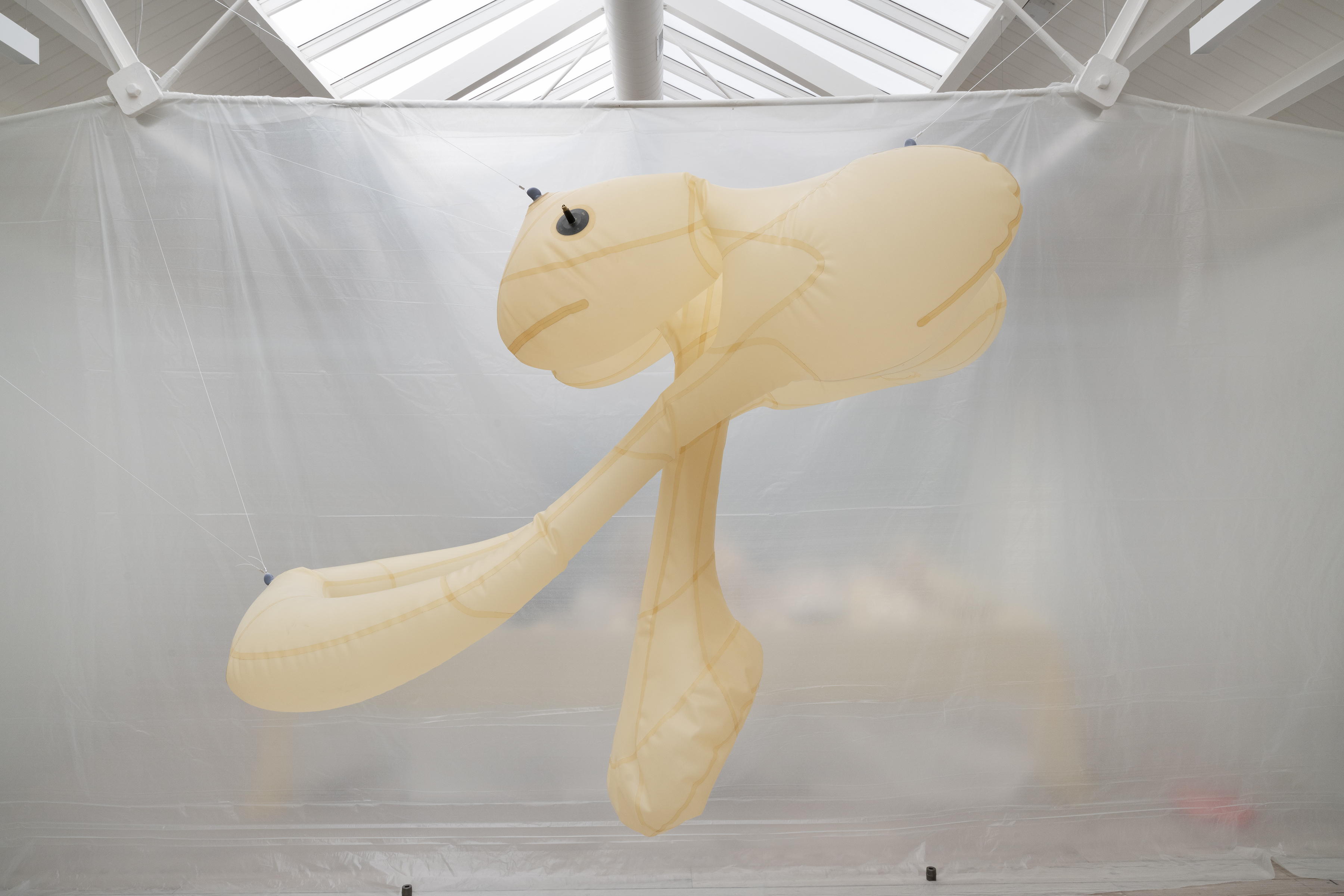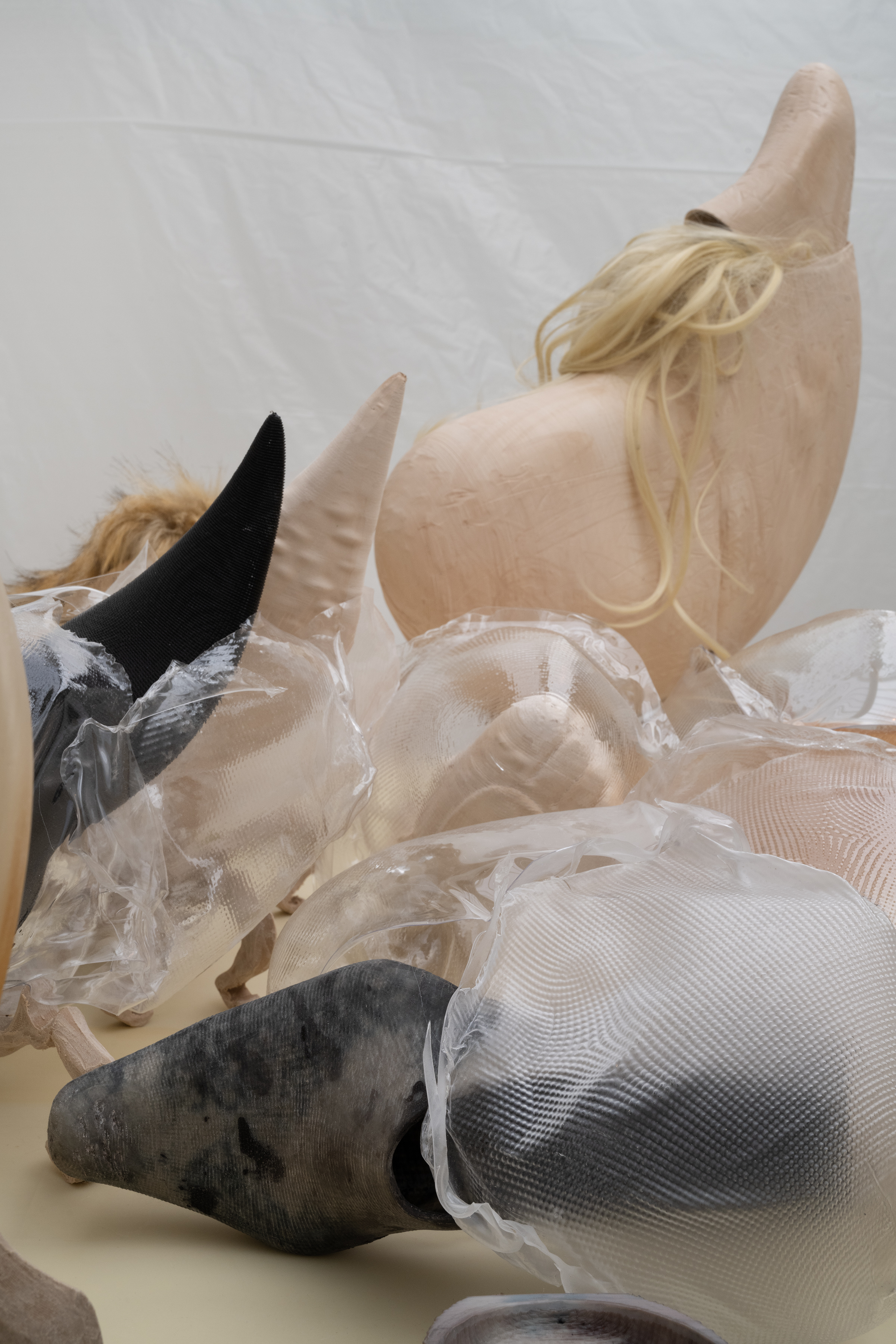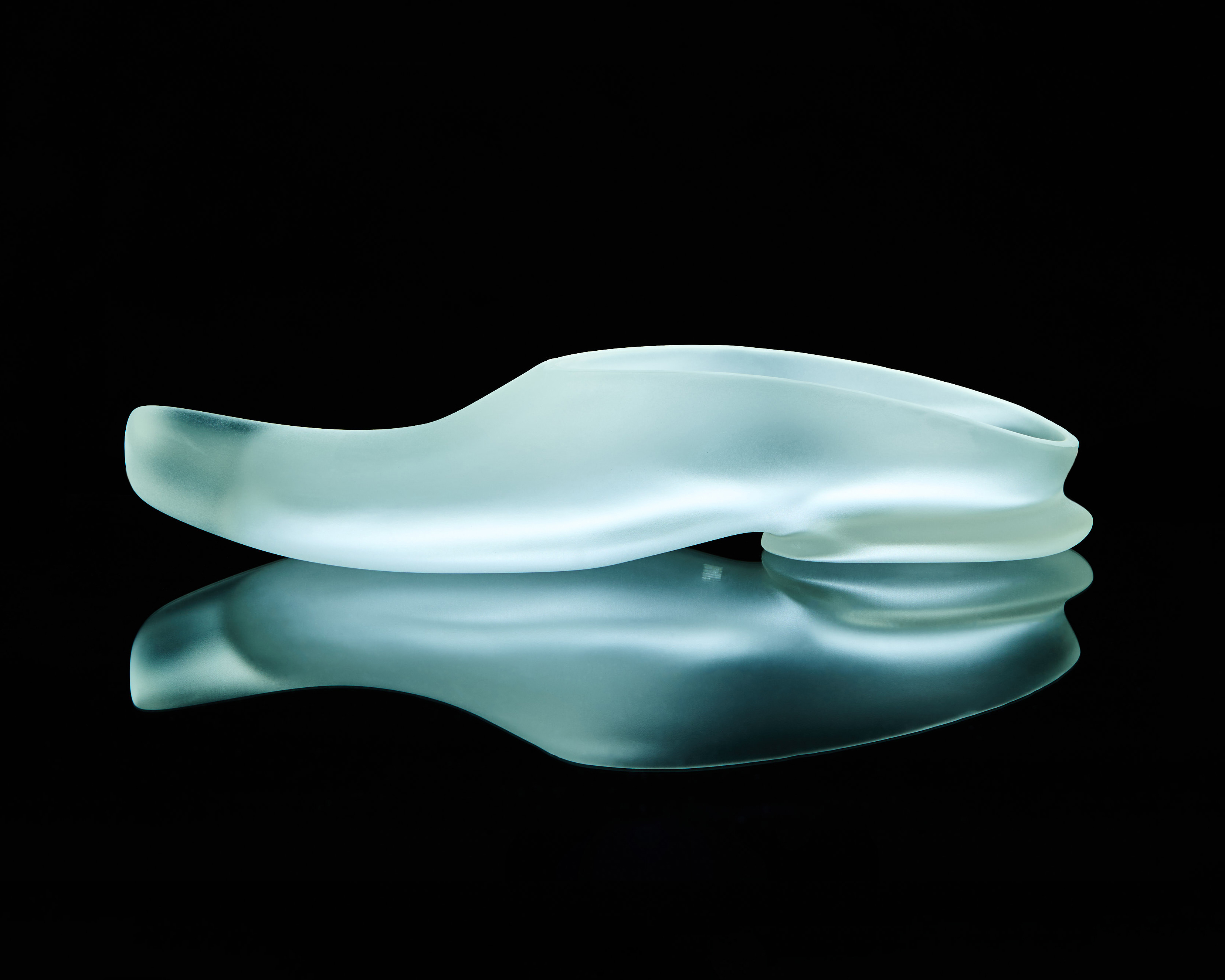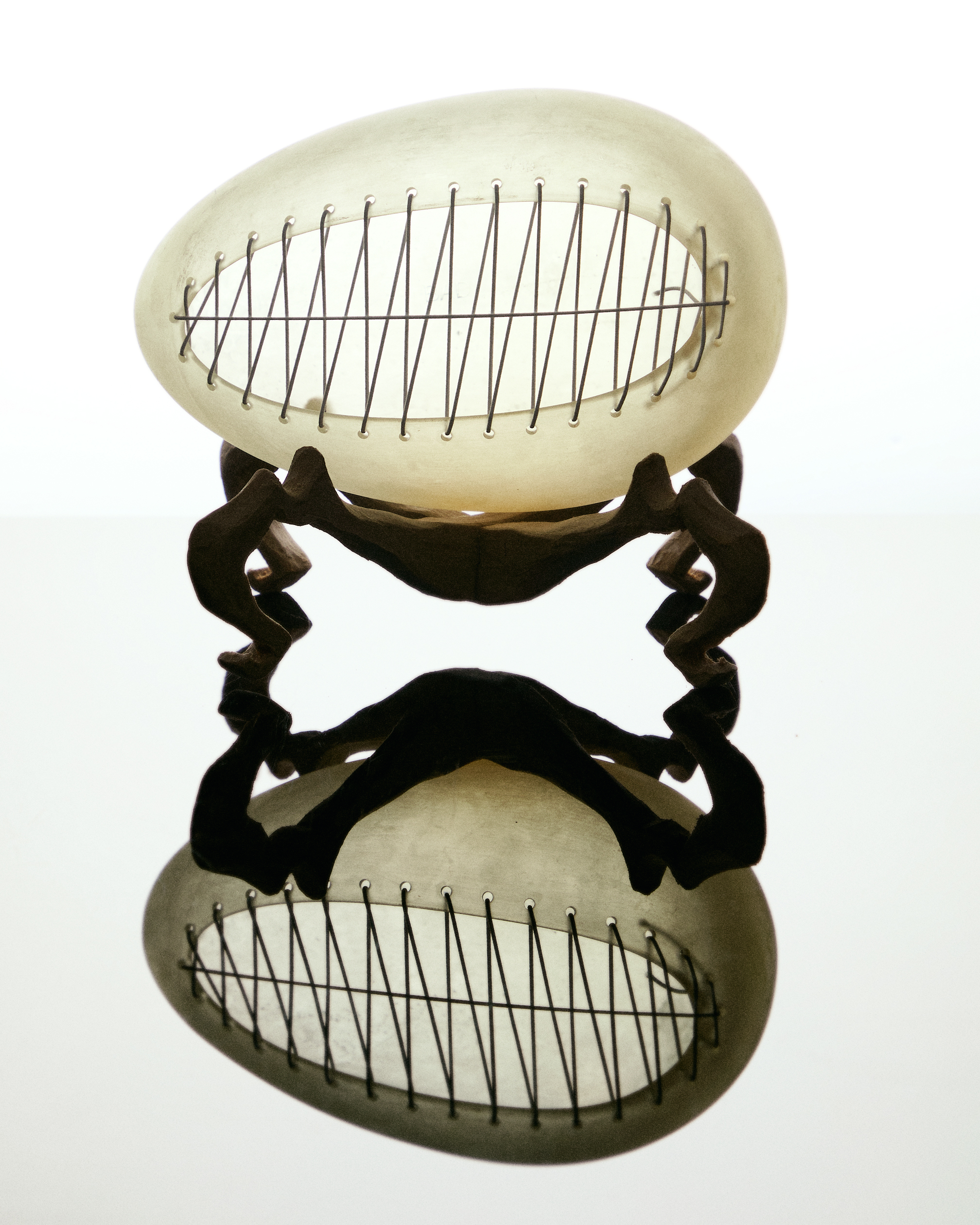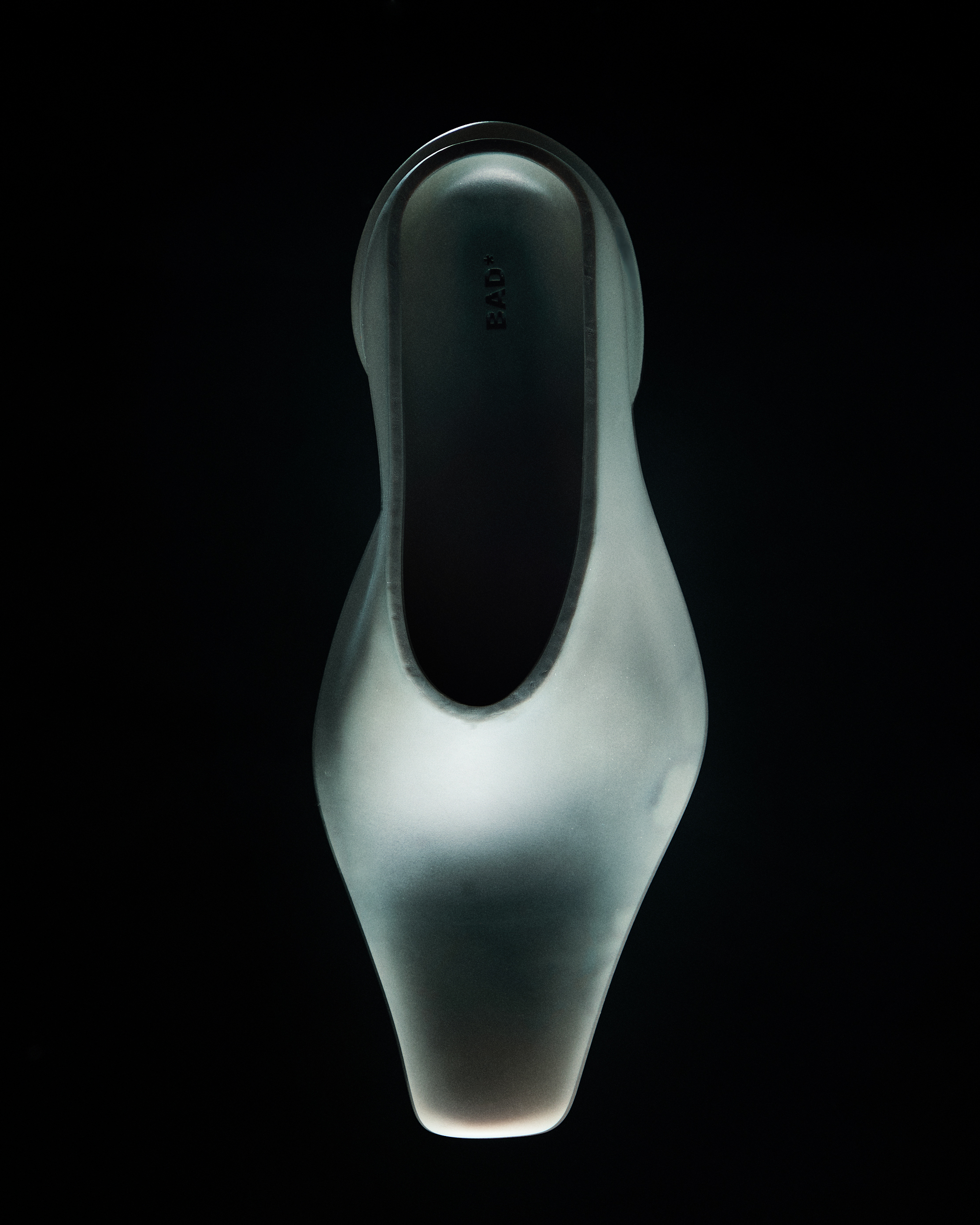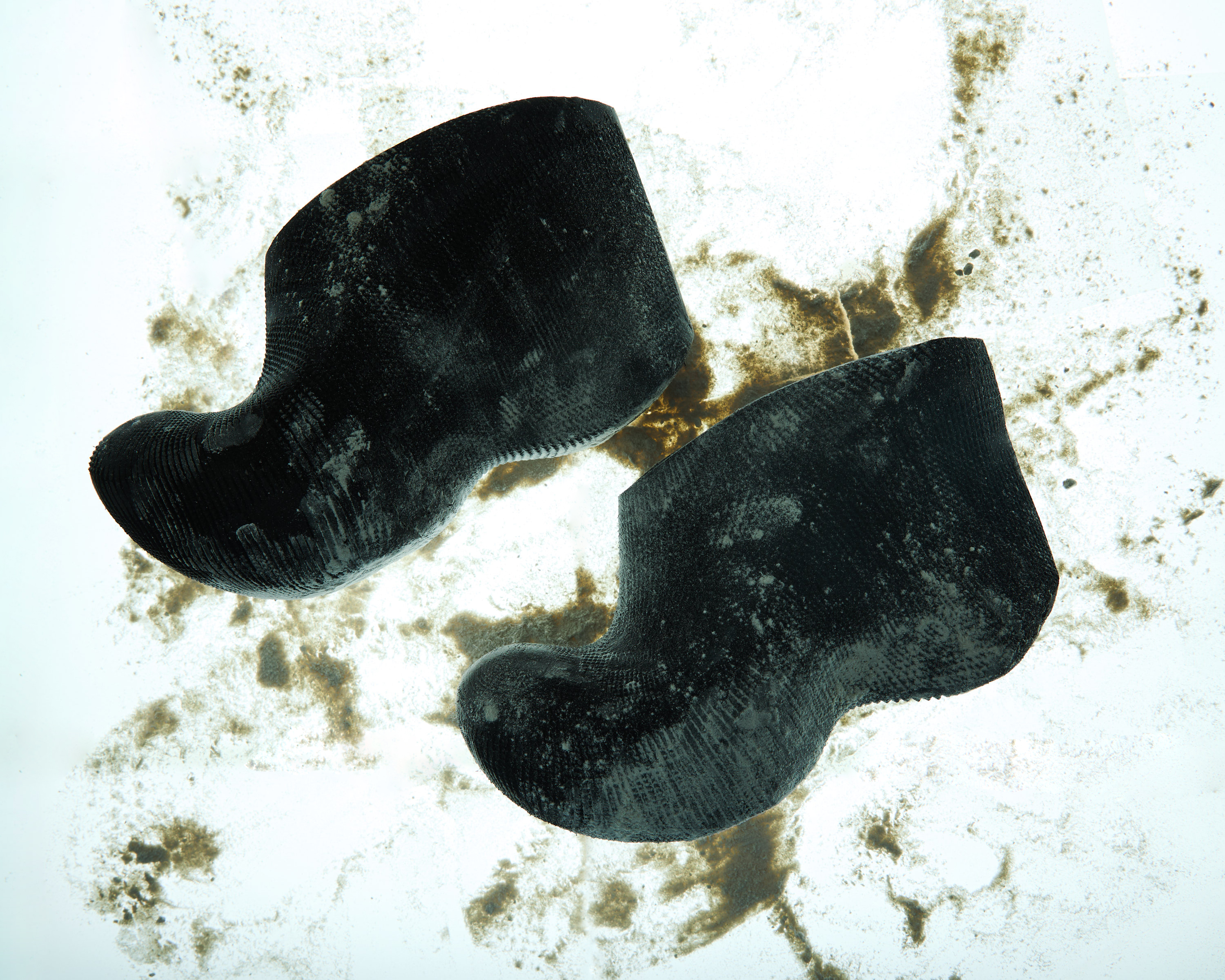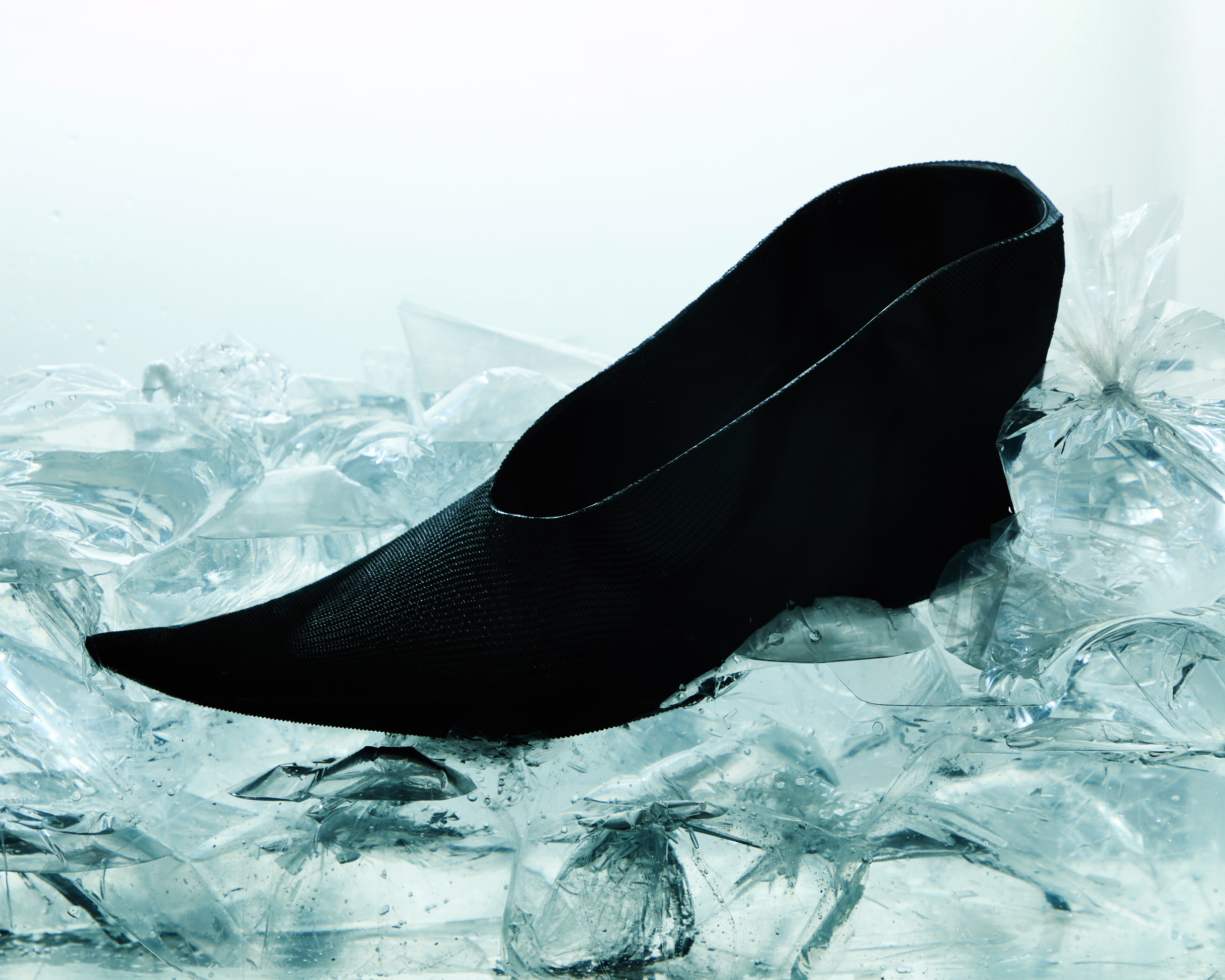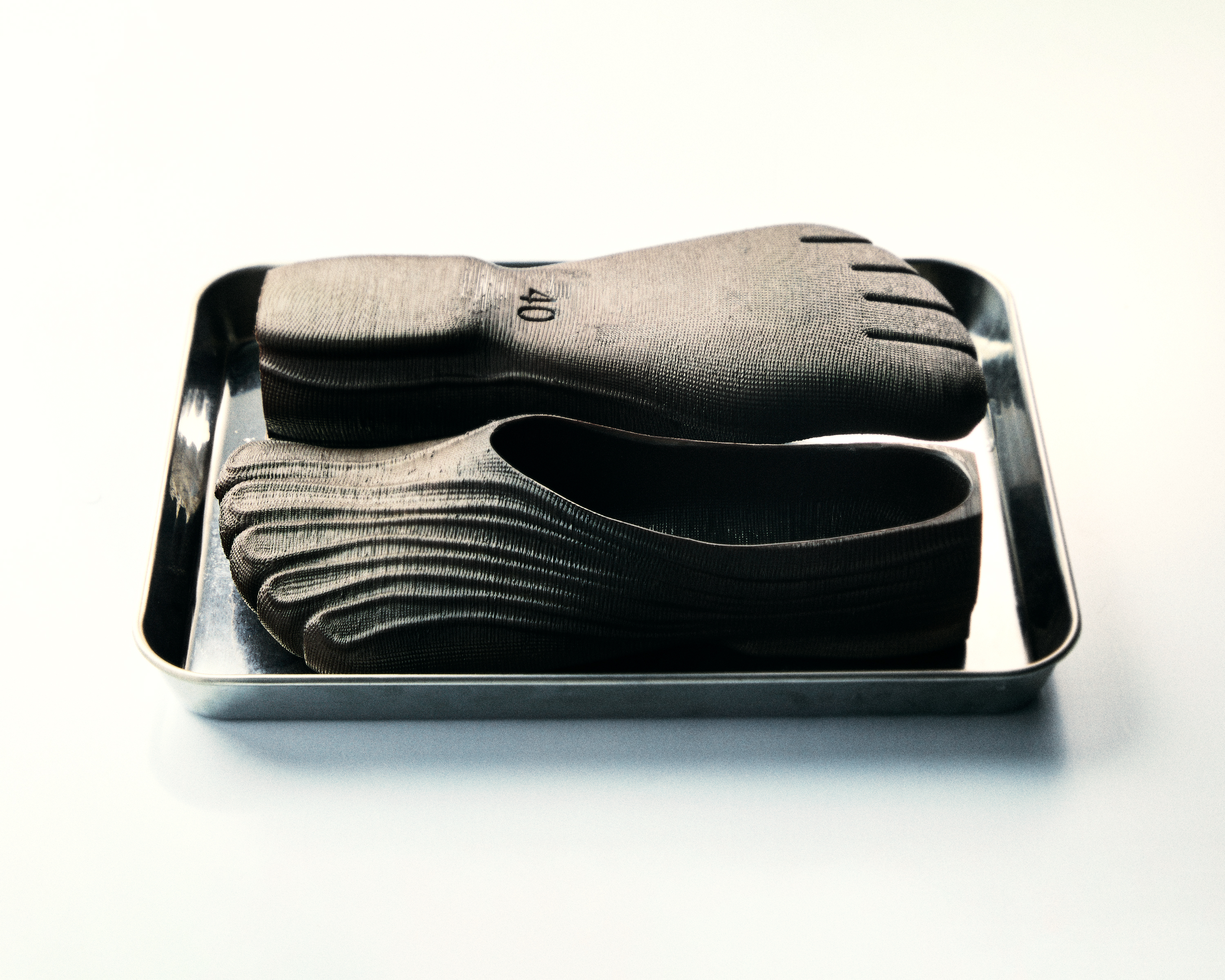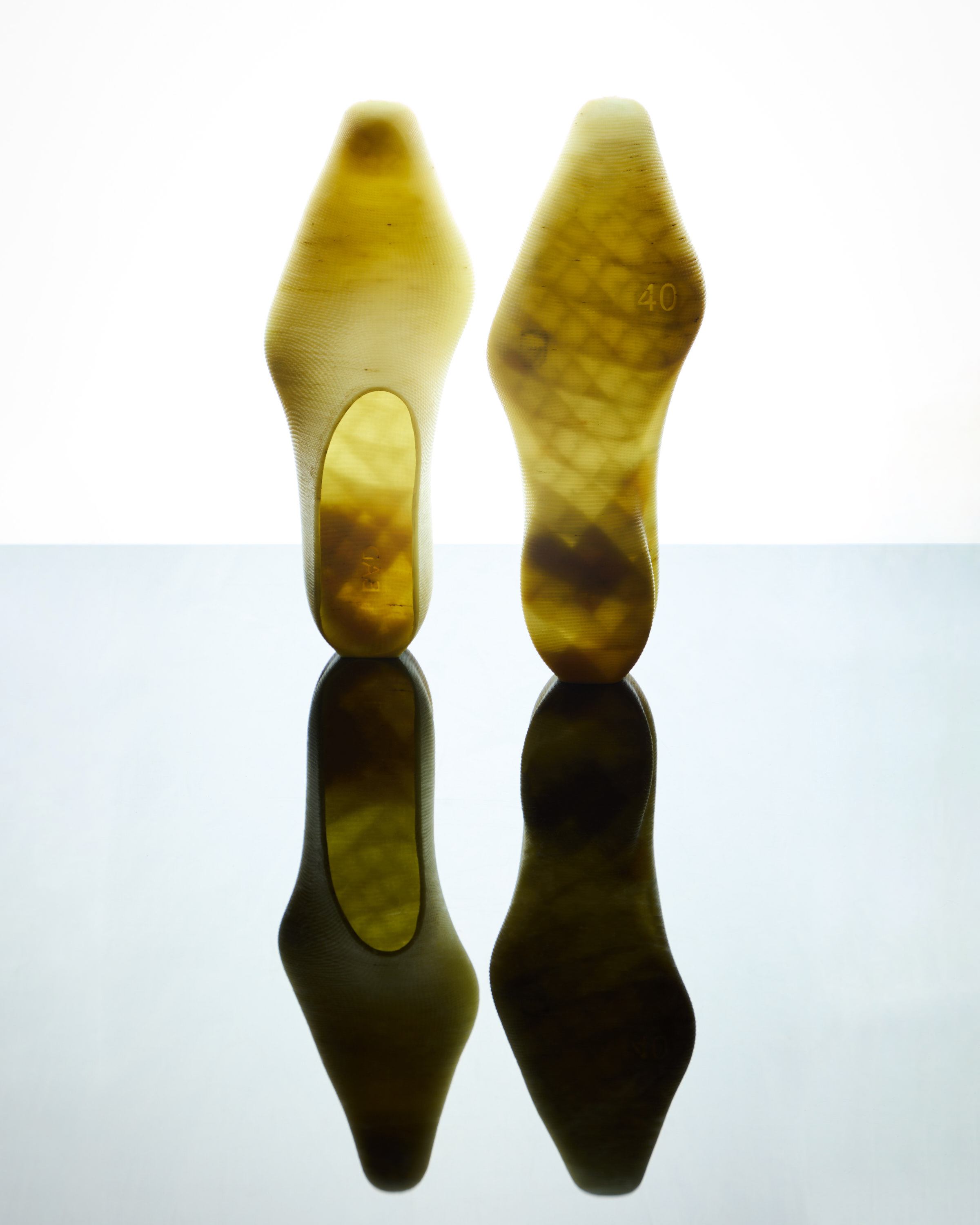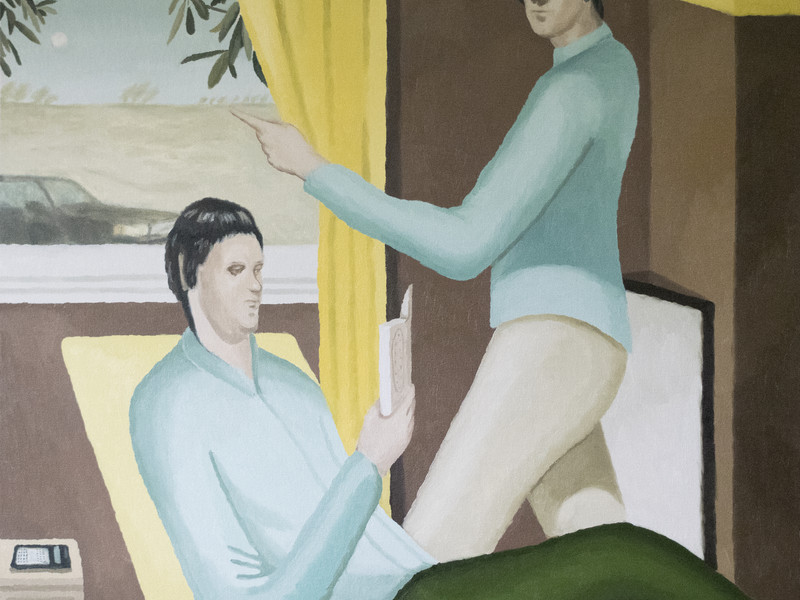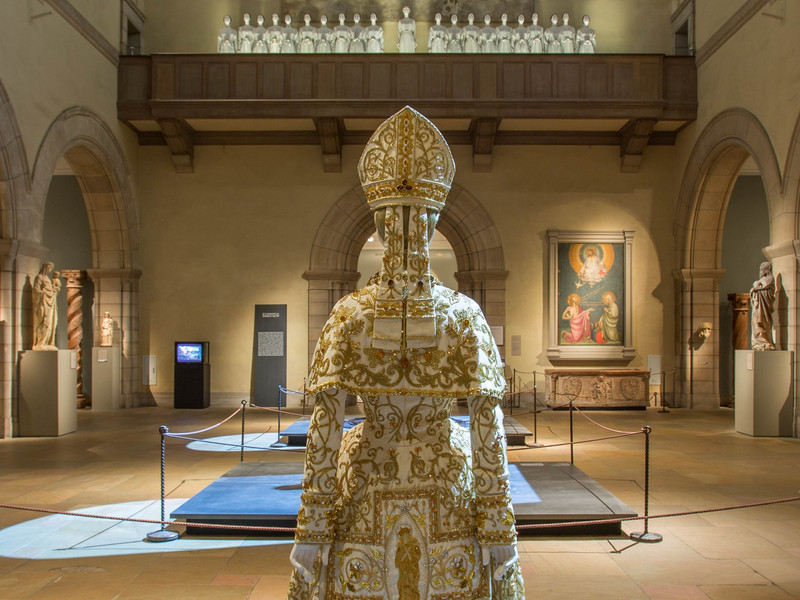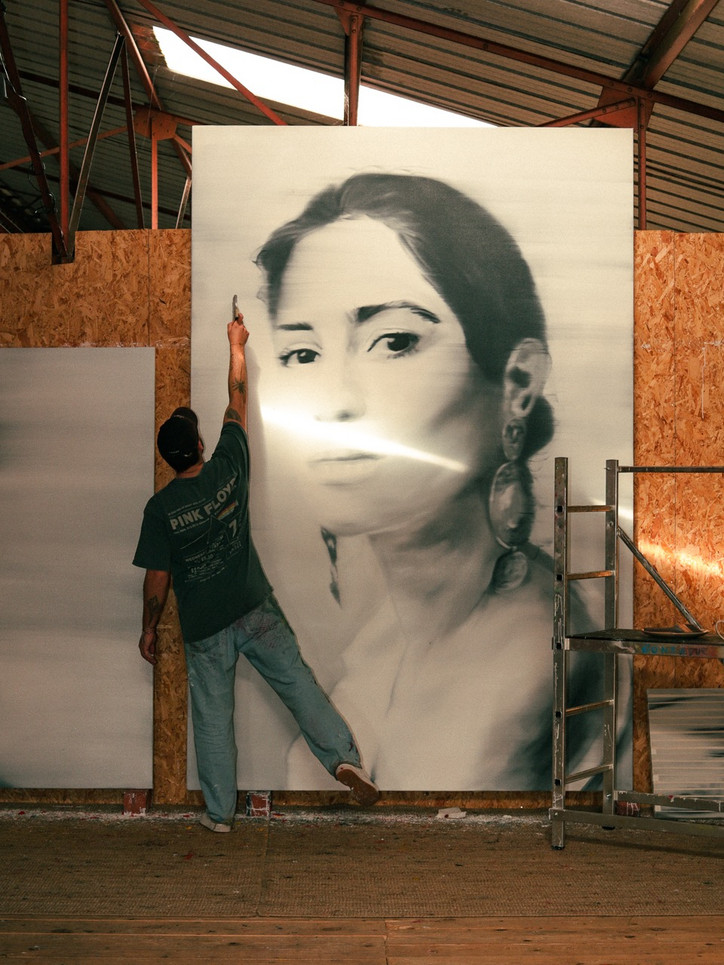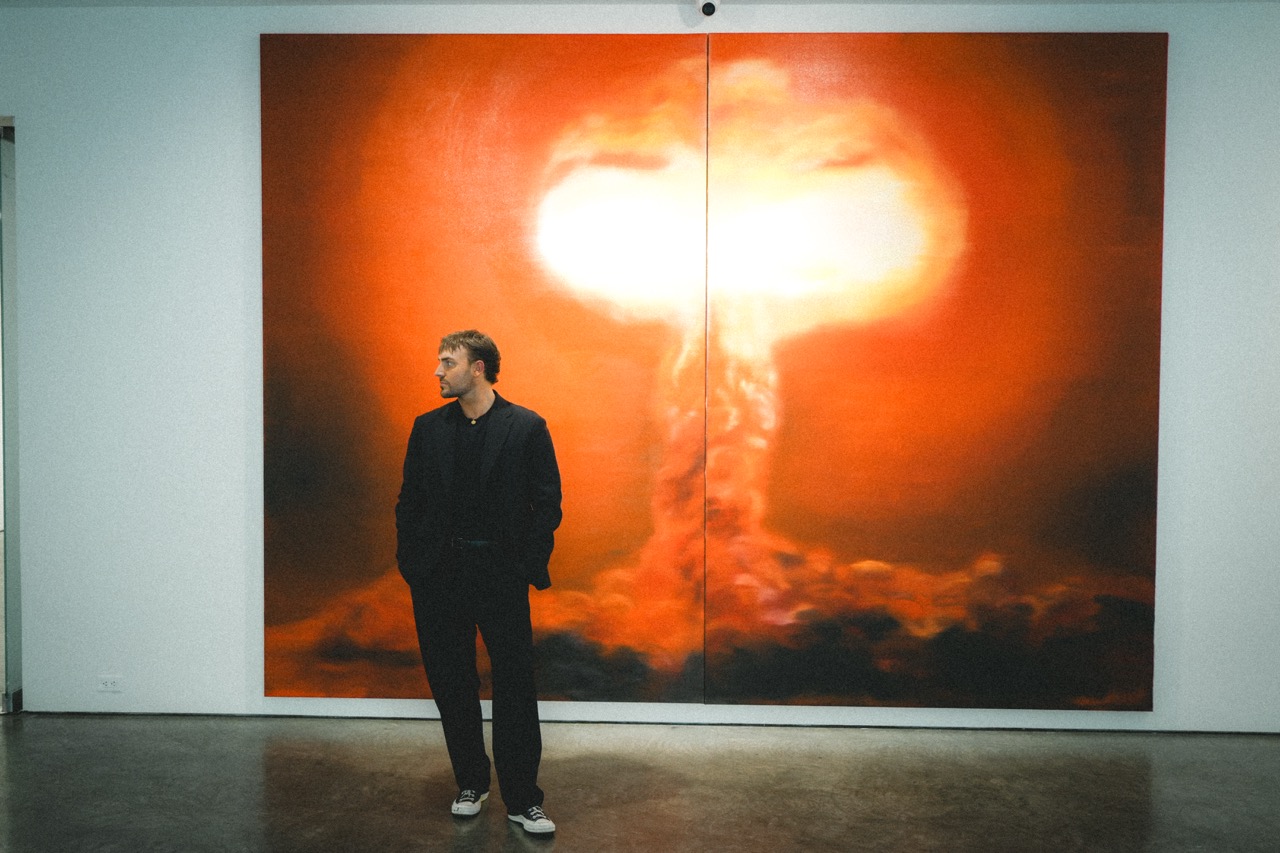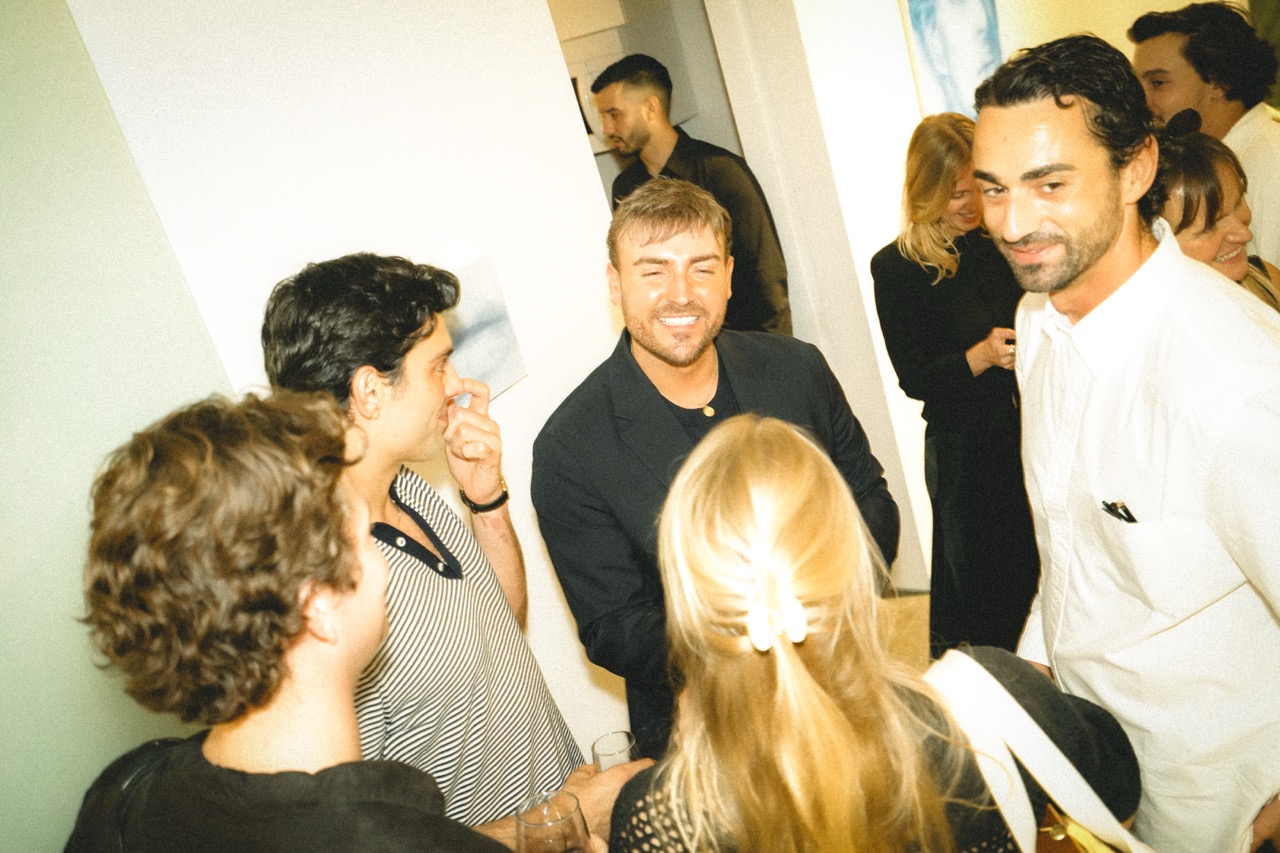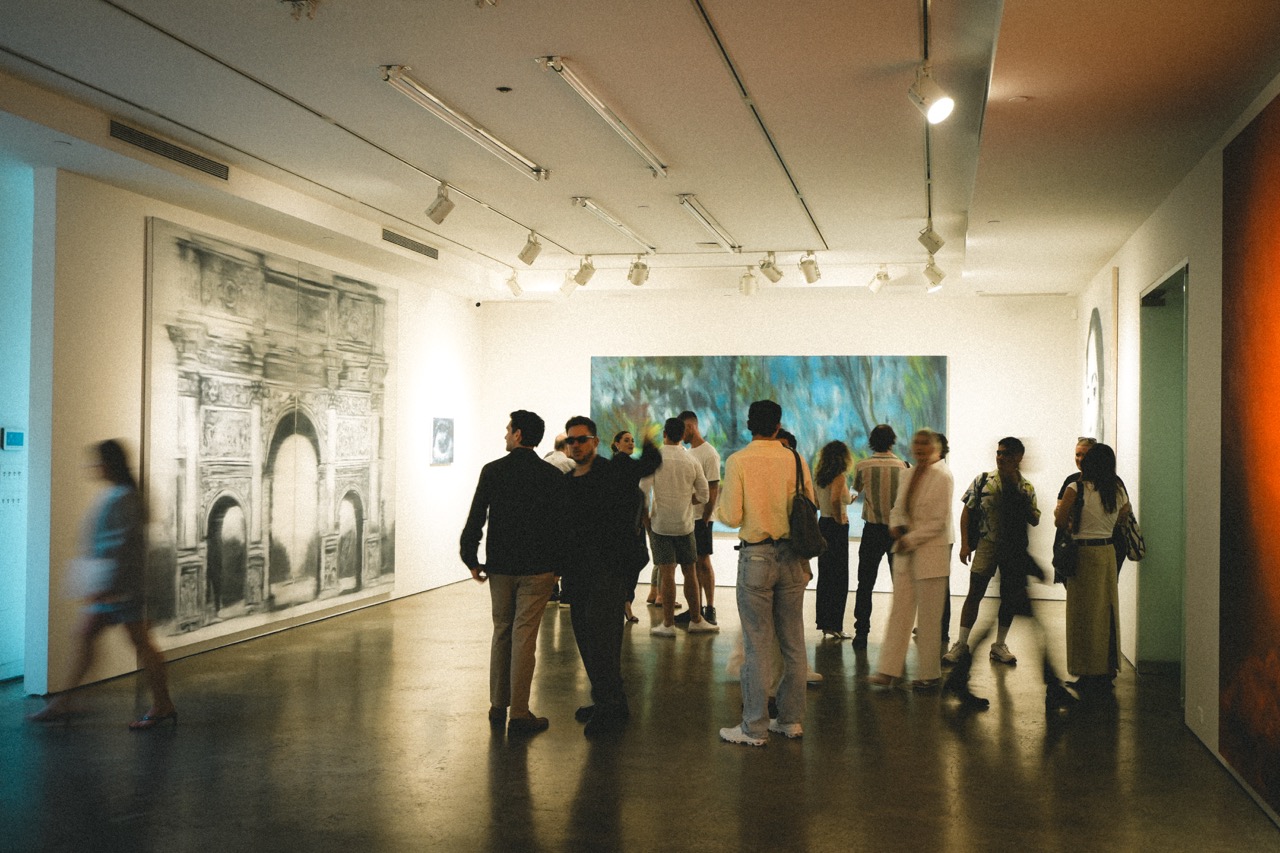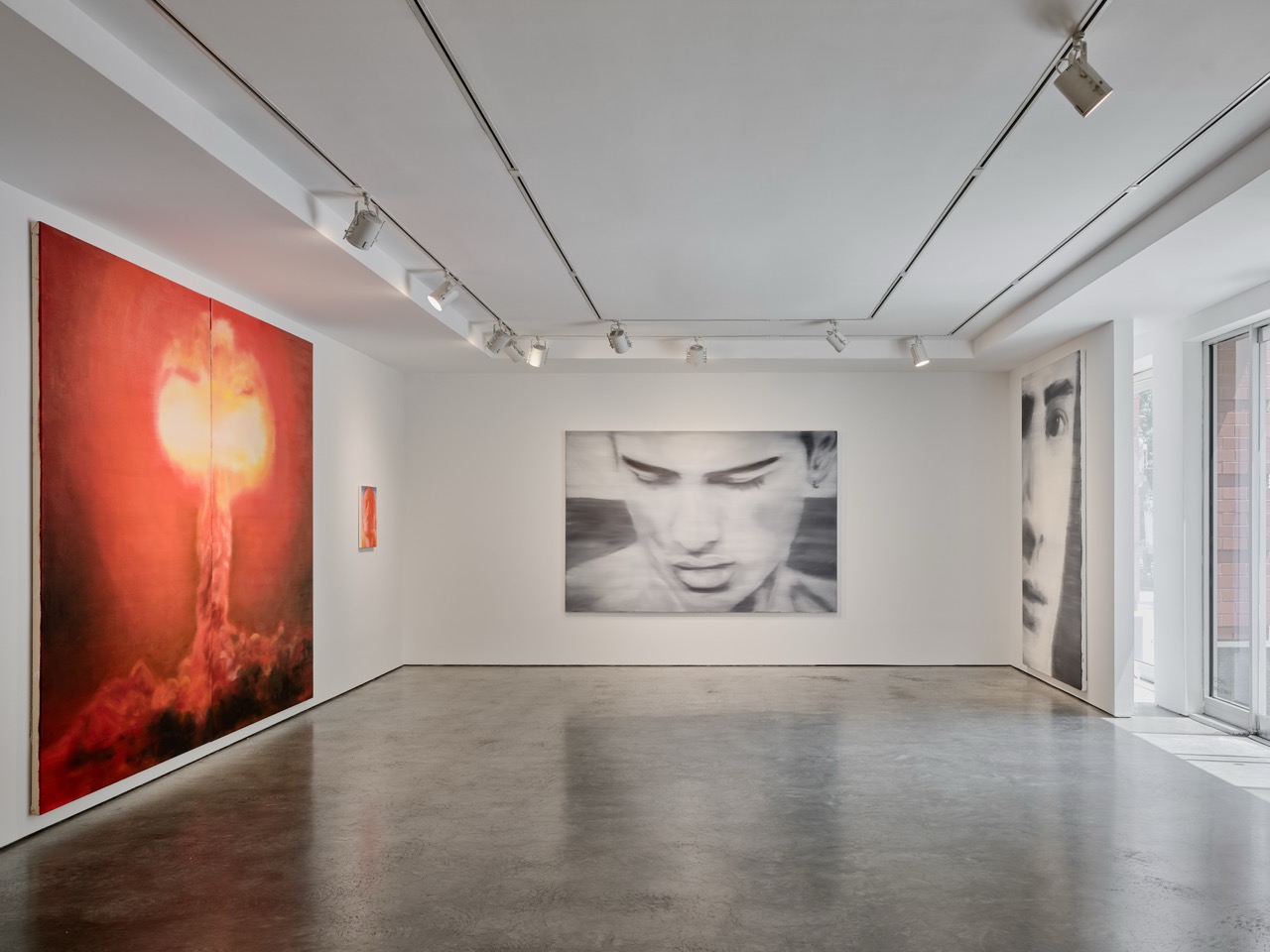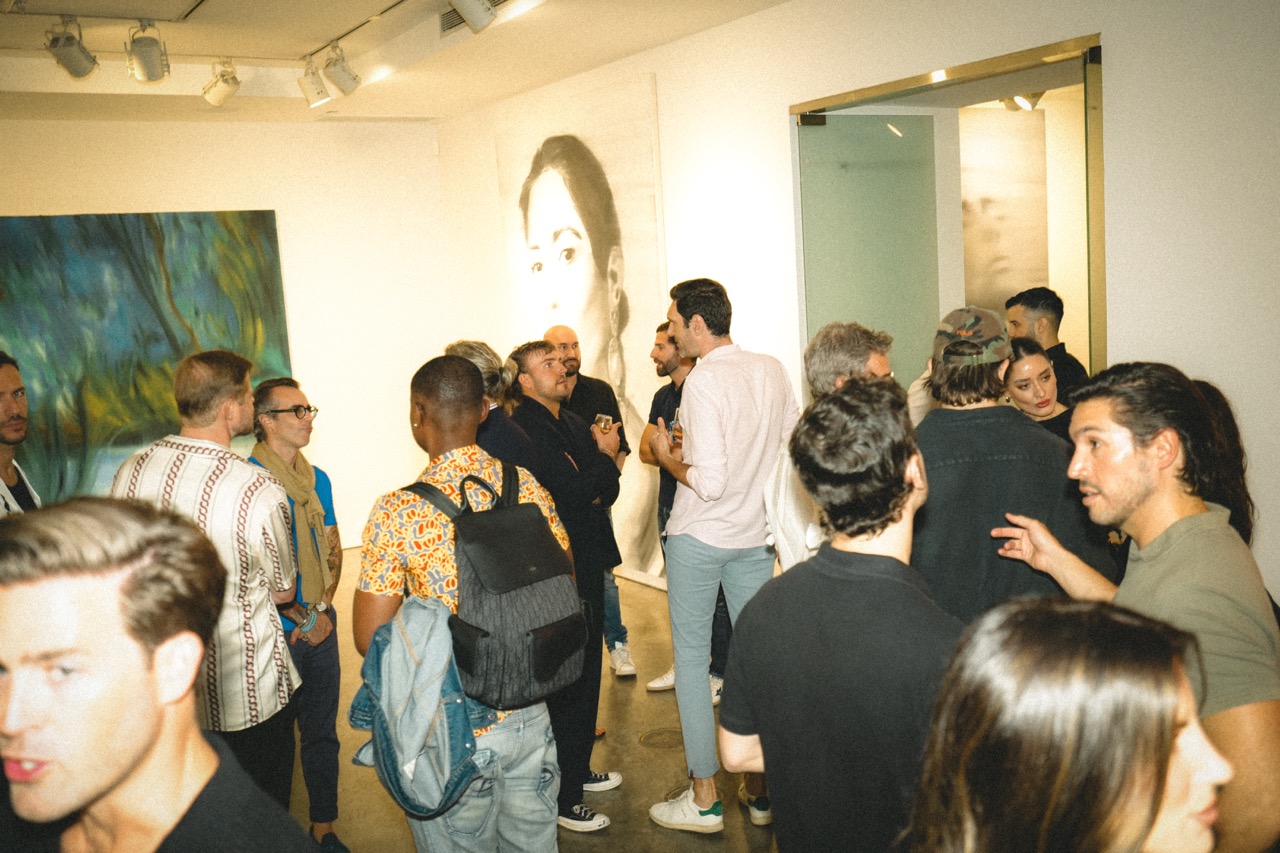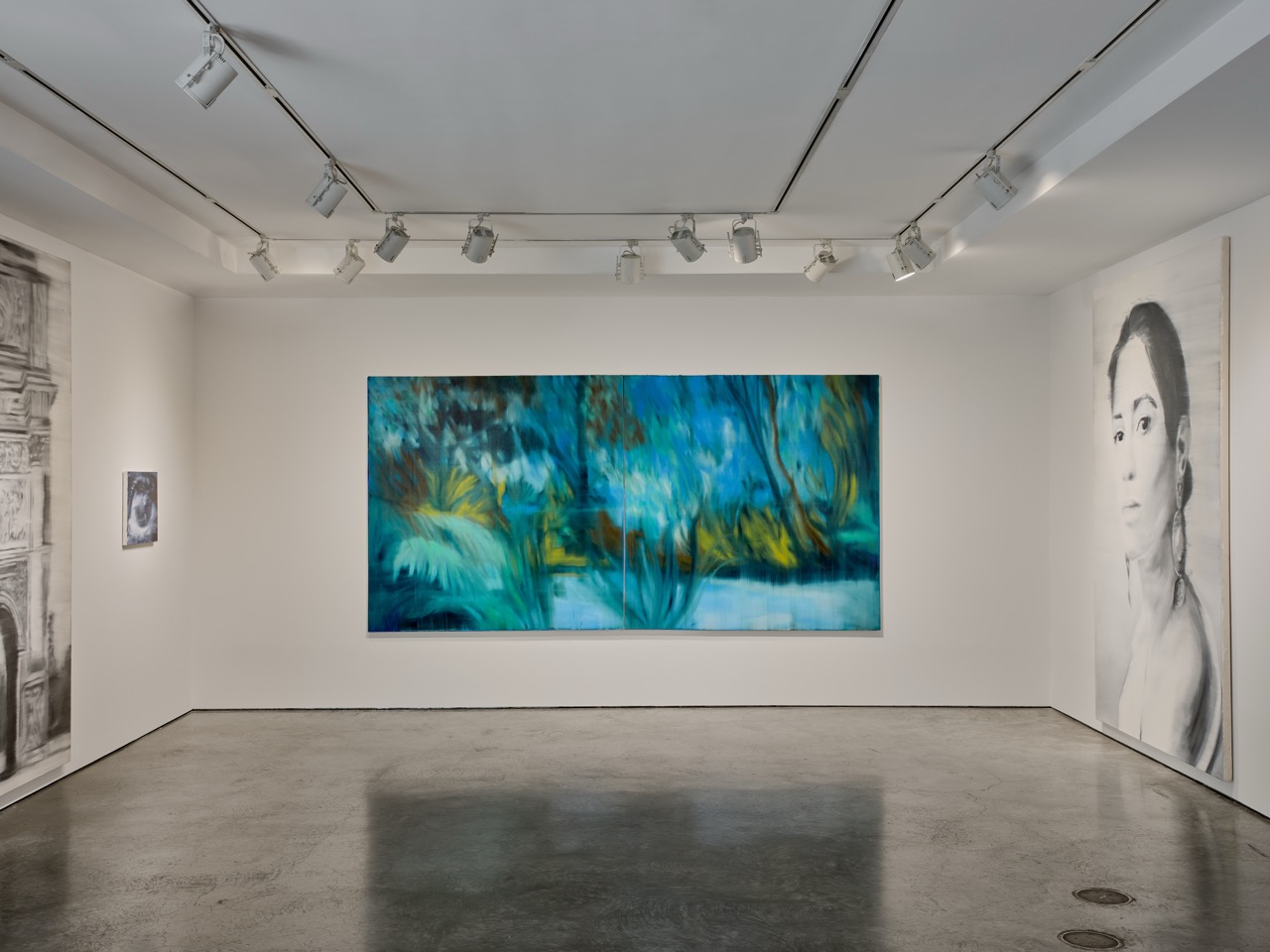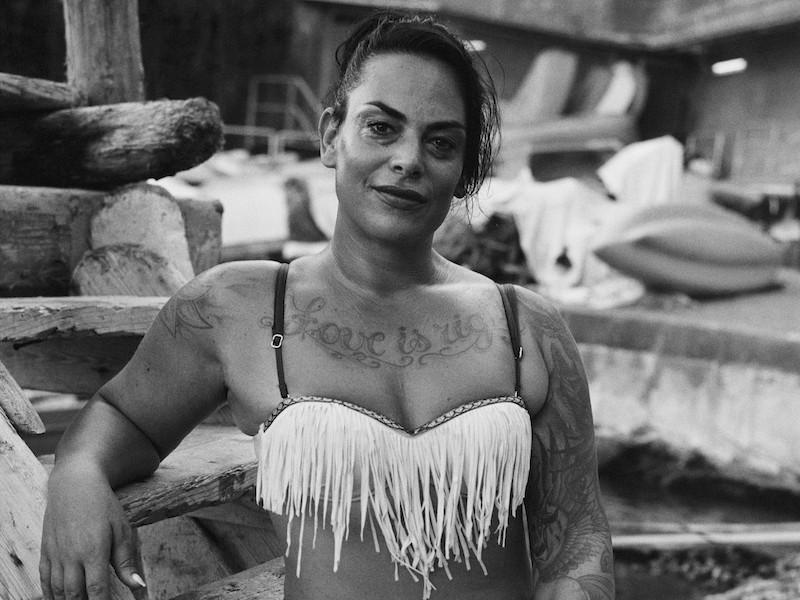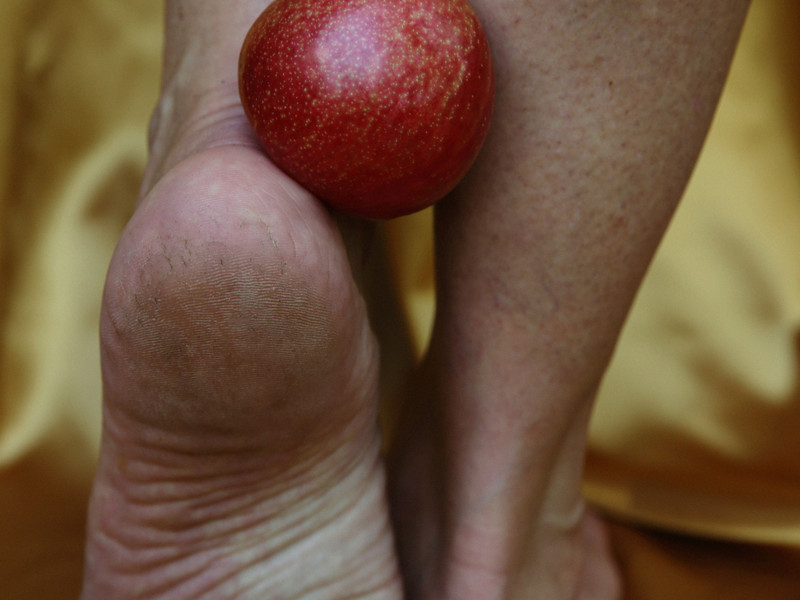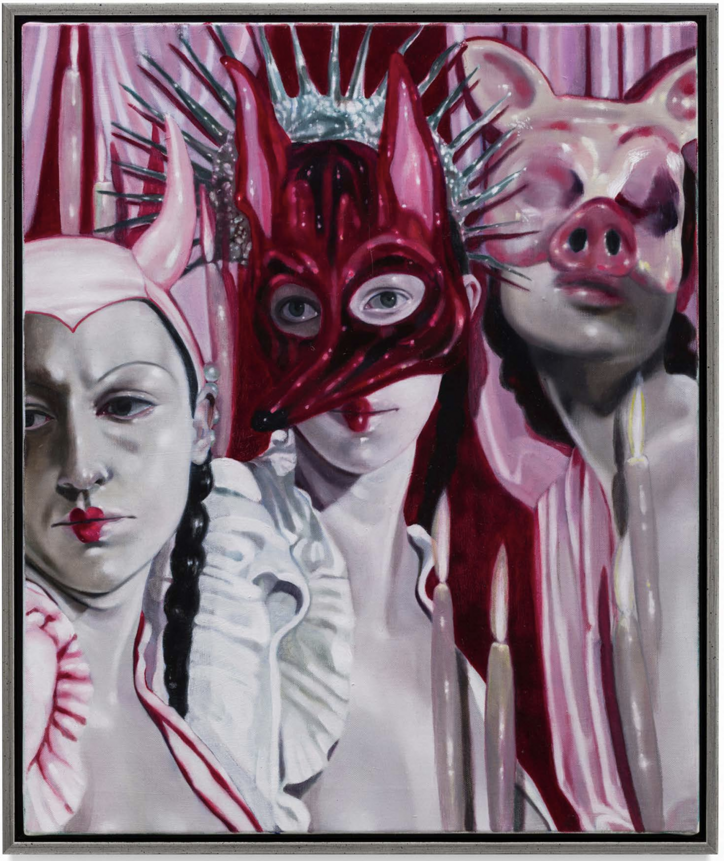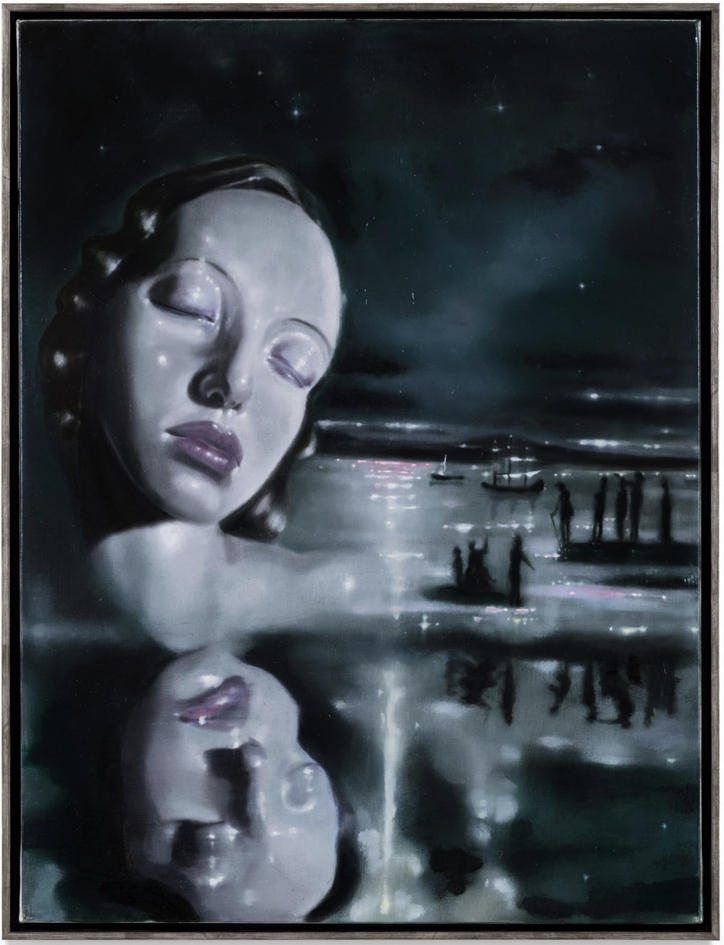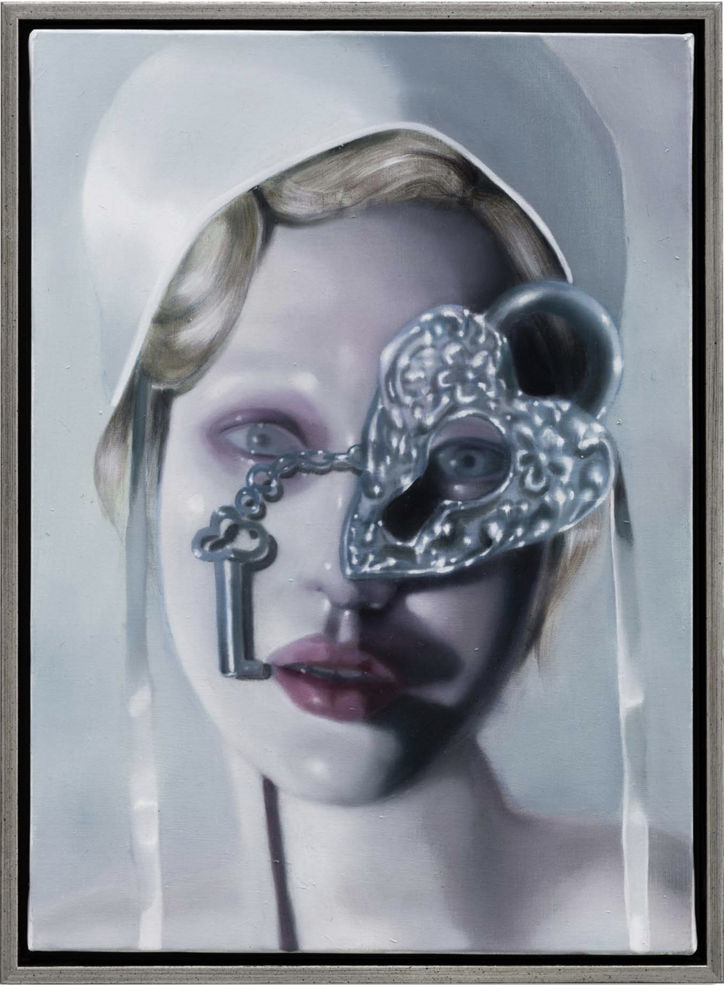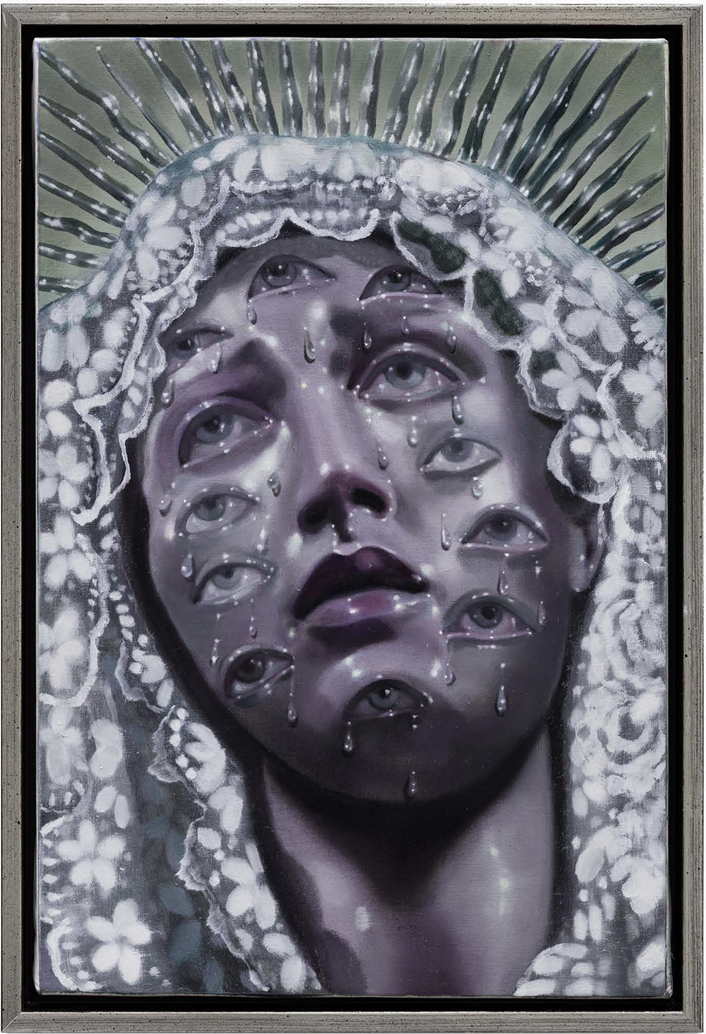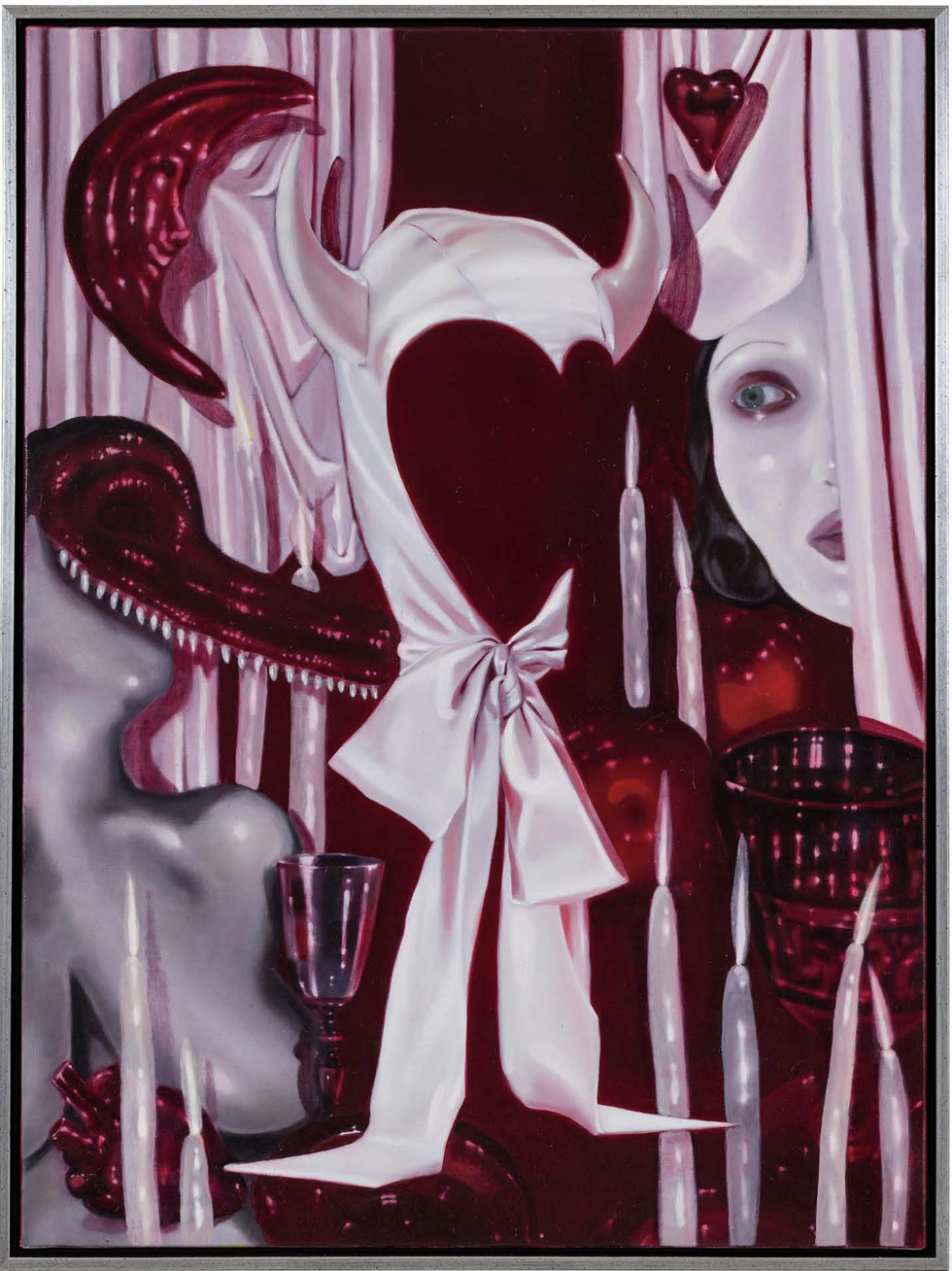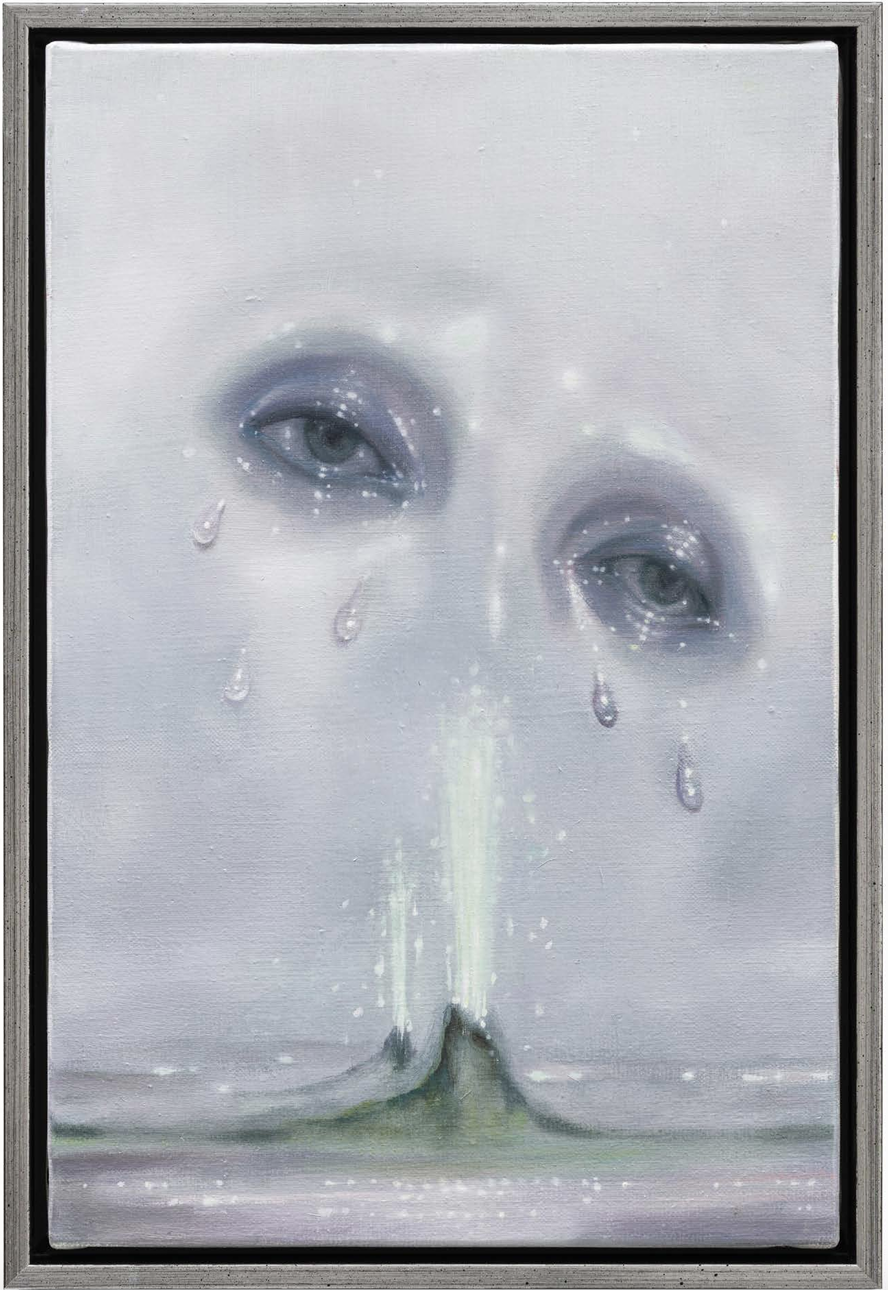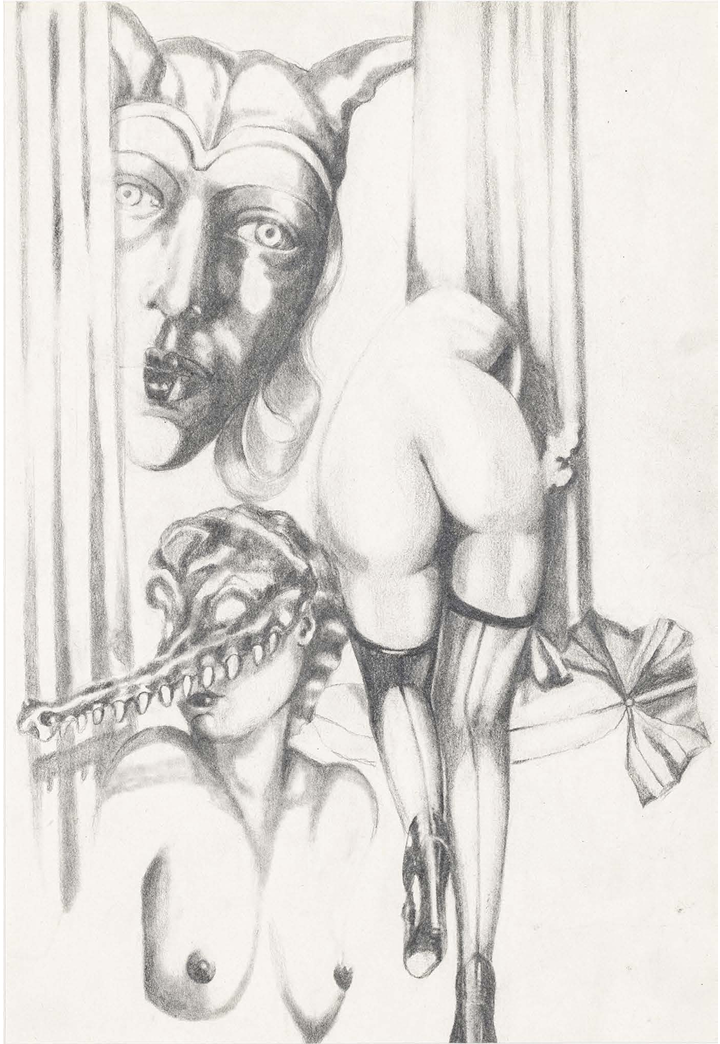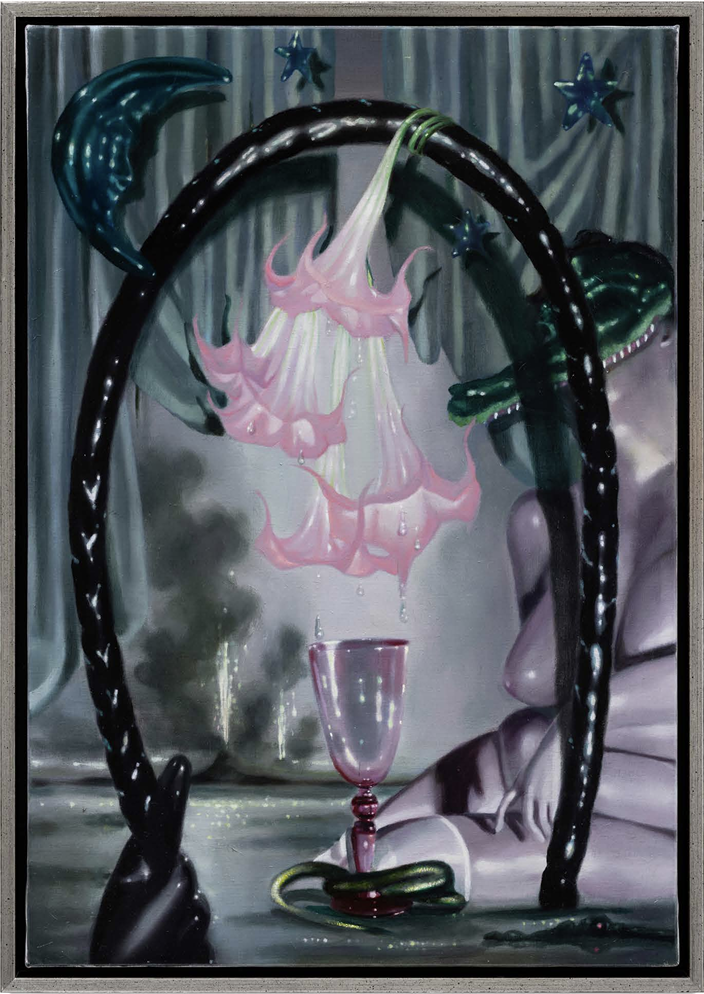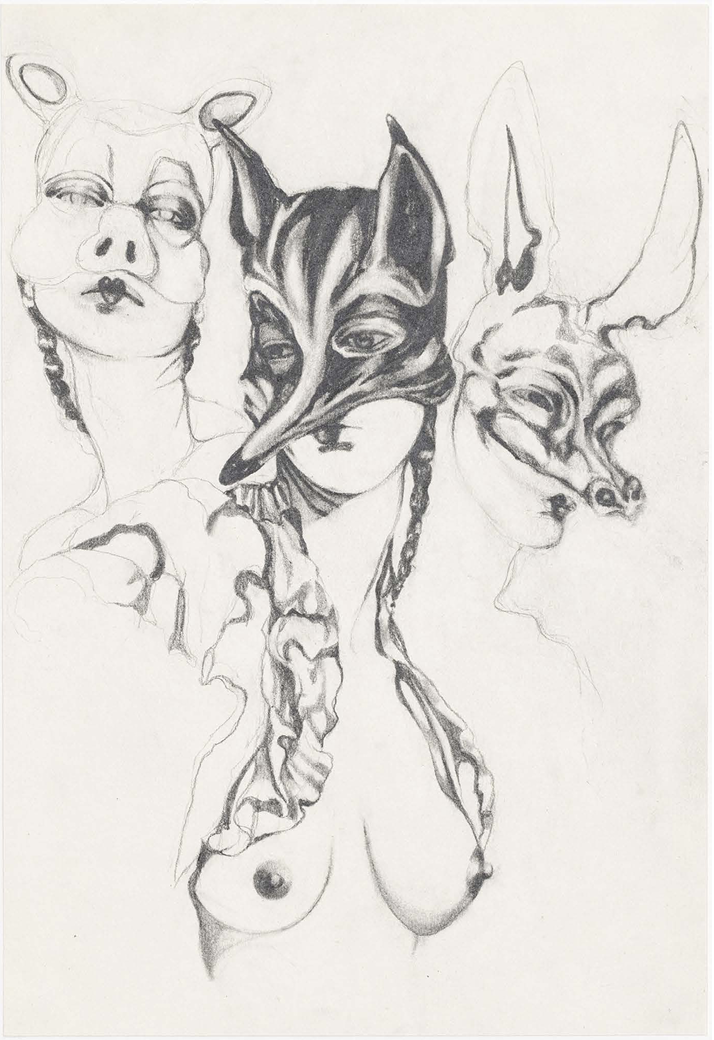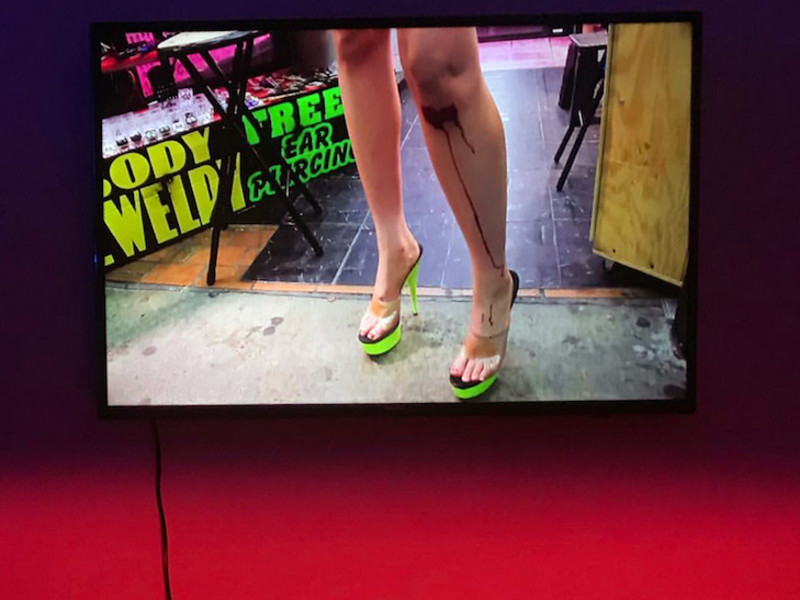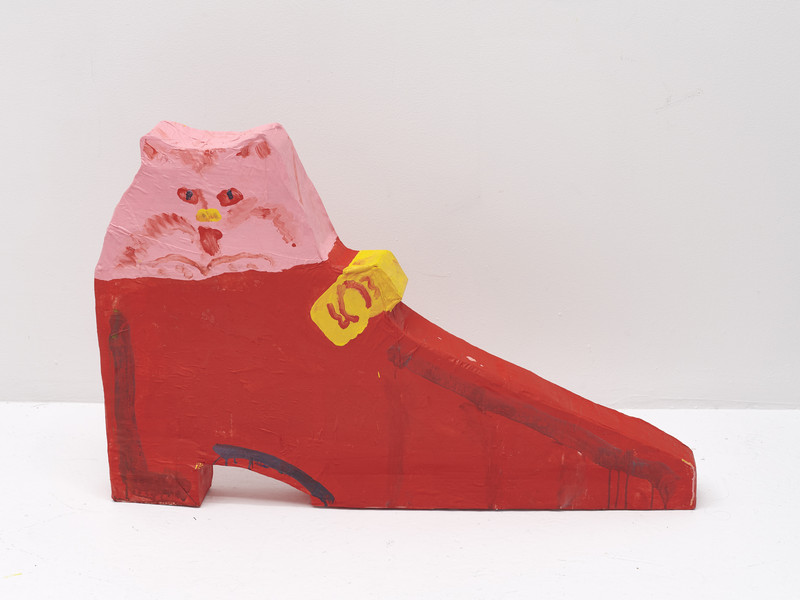'Til Death
So, at first, it may be unclear what Robert Zash’s smoky photos from a Muscle Mary club, or a “three-tit lady” have to do with that concept. But they speak, respectively, to the use of death as a moral compass in society and the mythical nature of death, in general. Growing up as a gay man at a time when the media only spoke about homosexuality in relation to HIV, Holroyd picked up on the influence of death on gay culture; the widely perpetuated prejudices—that gay people were all sick and that HIV was a gay man’s disease—at least partially gave birth to Muscle Mary culture.
"Growing up as gay man, I have been constantly exposed to death due to the constant narrative from the media about HIV and AIDS, and this translates with the way that I look," he said. "I’ve become obsessed with looking healthy."
And the three-tit lady is a reminder that we have no idea what the end of life looks like. They’re both mythical creatures.
As for Bergfors, her collaboration on the book was essential to Holroyd, who hadn’t had many personal experiences with death upon starting the project four years ago. Bergfors had recently lost her mom, and found a good listener in Holroyd; he could handle hearing about all the taboo parts of watching someone die, like the moments where it gets boring. So, the book became a place of grieving and exploration for both of them.
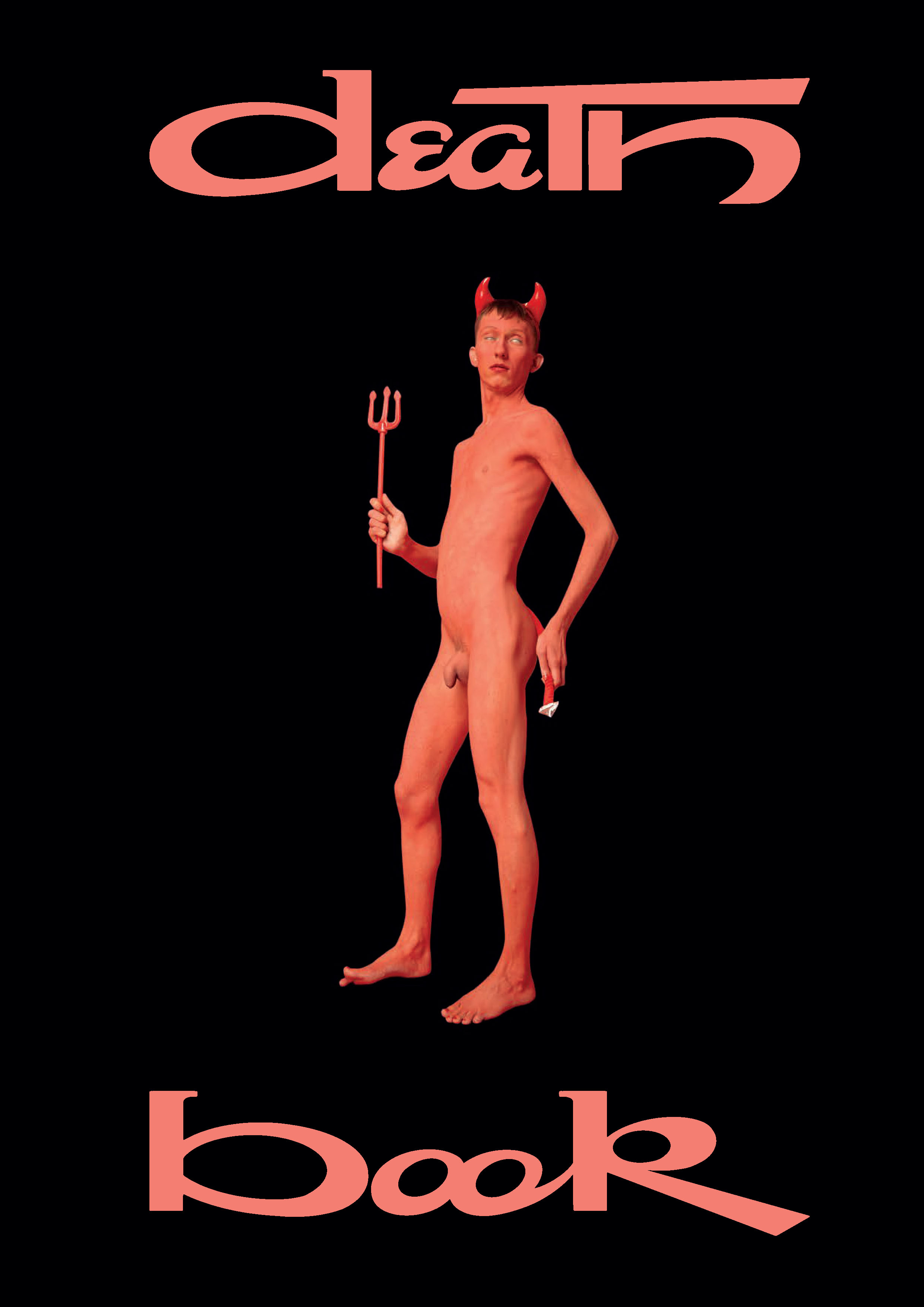

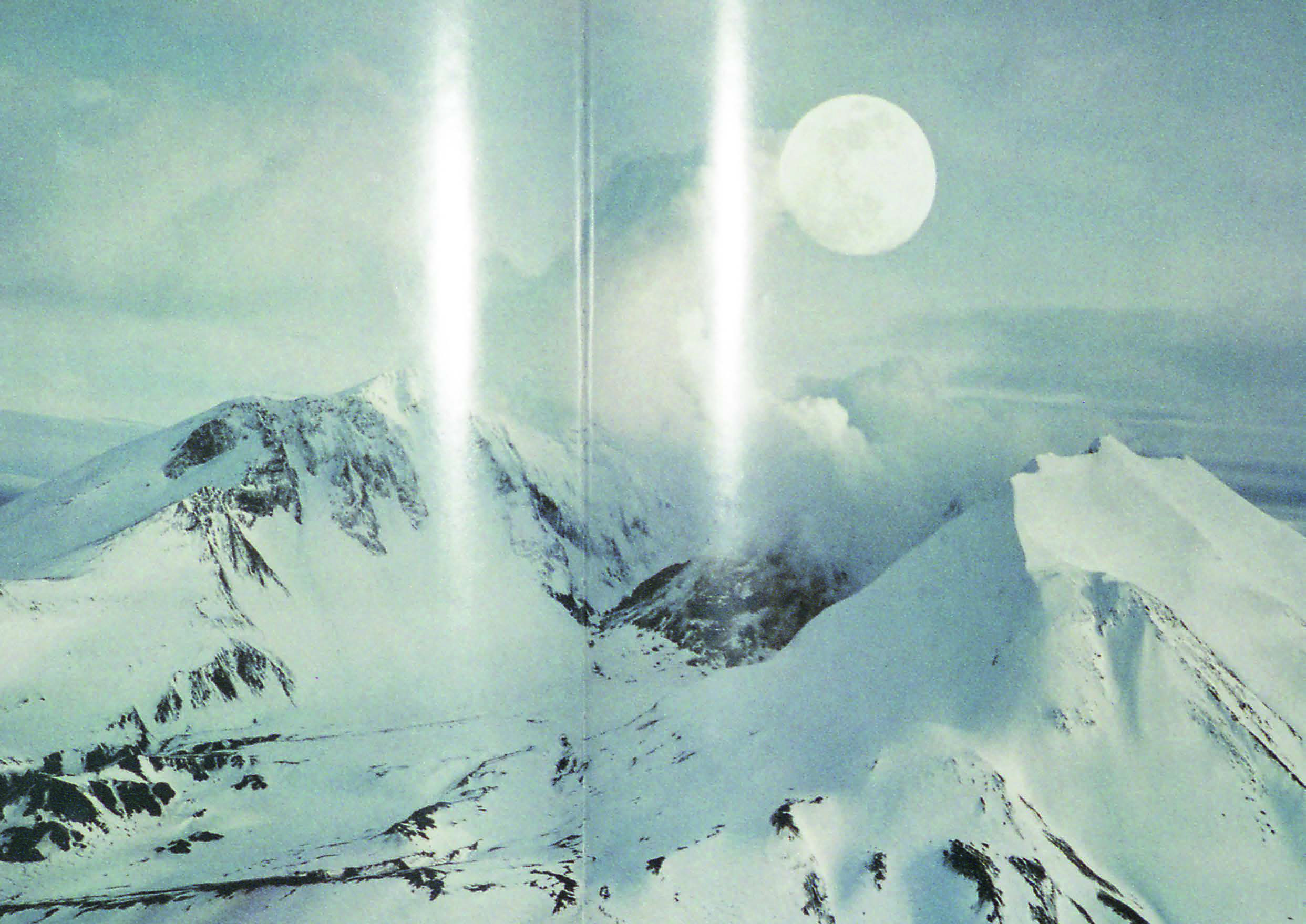
Can you tell me a little bit about what inspired The Death Book?
I’d been teaching a little bit of photography at the University of the Arts London. Some of my students are exploring the subject of death in their work, and I remember when I was that age I was doing the same. I also work a lot with photographer Edith Bergfors who I created the book with, and she just had a personal experience with death—her mother died. So, I thought it’d be great to collaborate with her because I hadn’t, at that point, had much personal experience with death other than some grandparents dying.
How old are your students?
They’re all from 18 to about 22. And I think at that age you’re still really obsessed with the unknown and learning about life. Sex and death are themes that students explore in their work quite a lot. And I really liked the images they were making—they made biblical references often mixed with images of pornography or erotica. It was all sort of quite distasteful—it wasn’t fully realized work—and if you look at my work, there’s lots of grotesque themes.
Then there are the biblical scenes with fake blood and it reminds me of the work I was making at that age, as well. I think that’s a recurring theme throughout the book—it doesn’t have a solid theme, it’s lots of different ideas and themes about death. In a way, it’s a sketchbook of different ideas of death.
What’s special about the relationship between photography and death versus any other visual art form?
I teach the teach the students basic photography theory from Susan Sontag, Roland Barthes and Walter Benjamin. Those theorists talk about memory and death in photography and I wanted some of the images in the book to reference this introduction or starting point to photography.
I’m curious about how some of the images relate to death. For example the drone shots of land surrounded by a body of water?
The landscape images are in reference to hospices, because when you visit a hospice there are lots of calming, scenic imagery on the walls. The three-tit lady was again, my students were making pornographic images about biblical stories, so that image is sort of a mythical story we made up. And there’s a cherub as well, and obviously, the devil.
The clubbing scenes, those were in relation to how biblical stories, and—because death as we know it, when we look at it visually, it’s created by us. We don’t really know what death looks like, what we see is a representation of death. So, death throughout history has been used as a moral compass to control people. So, the devil, for example, is actually a gay male escort, and the club photos in there are from a gay club. It’s a gay Muscle Mary club and we were interested in how communities such as the gay community have been controlled so much by death, for example by HIV.
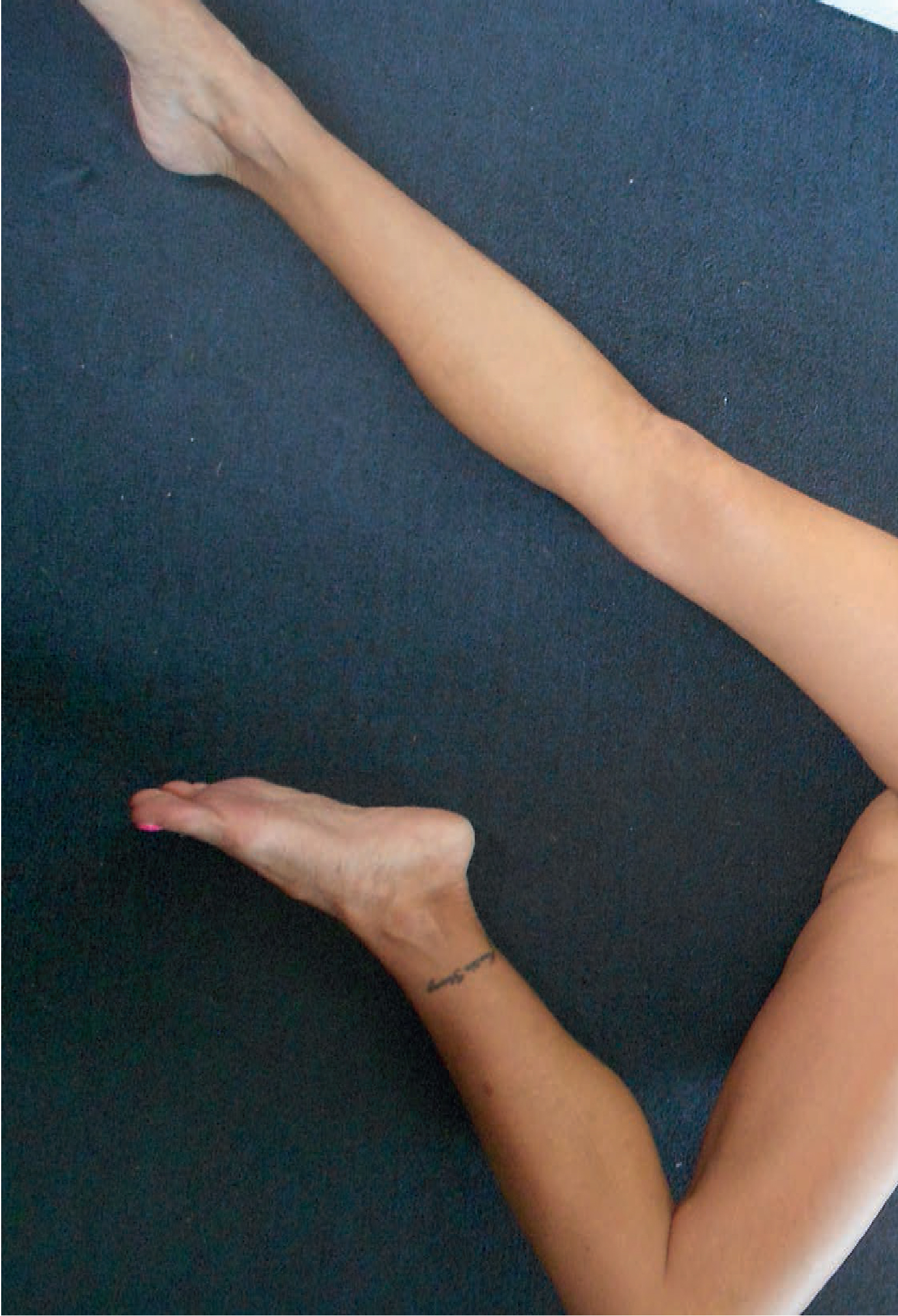
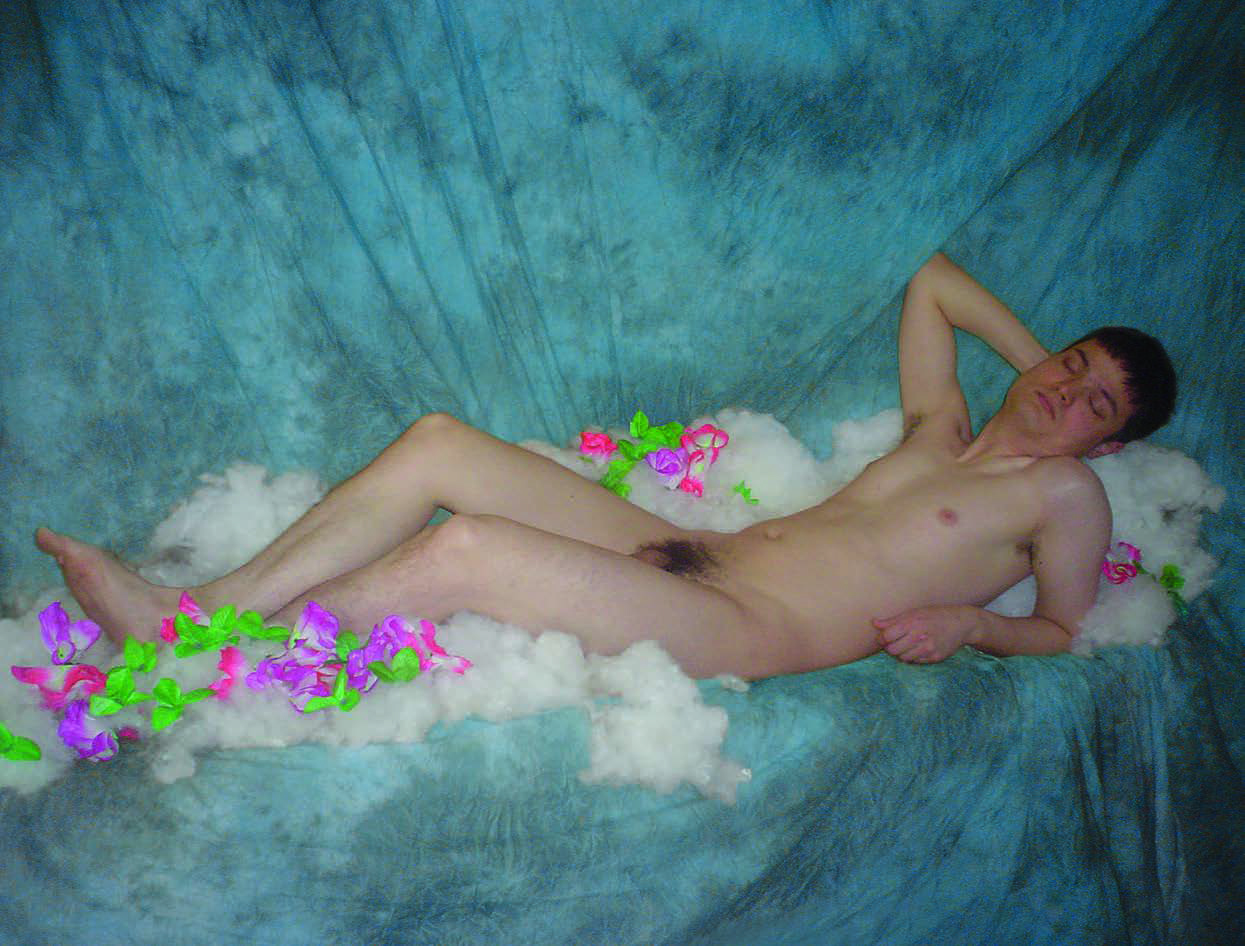
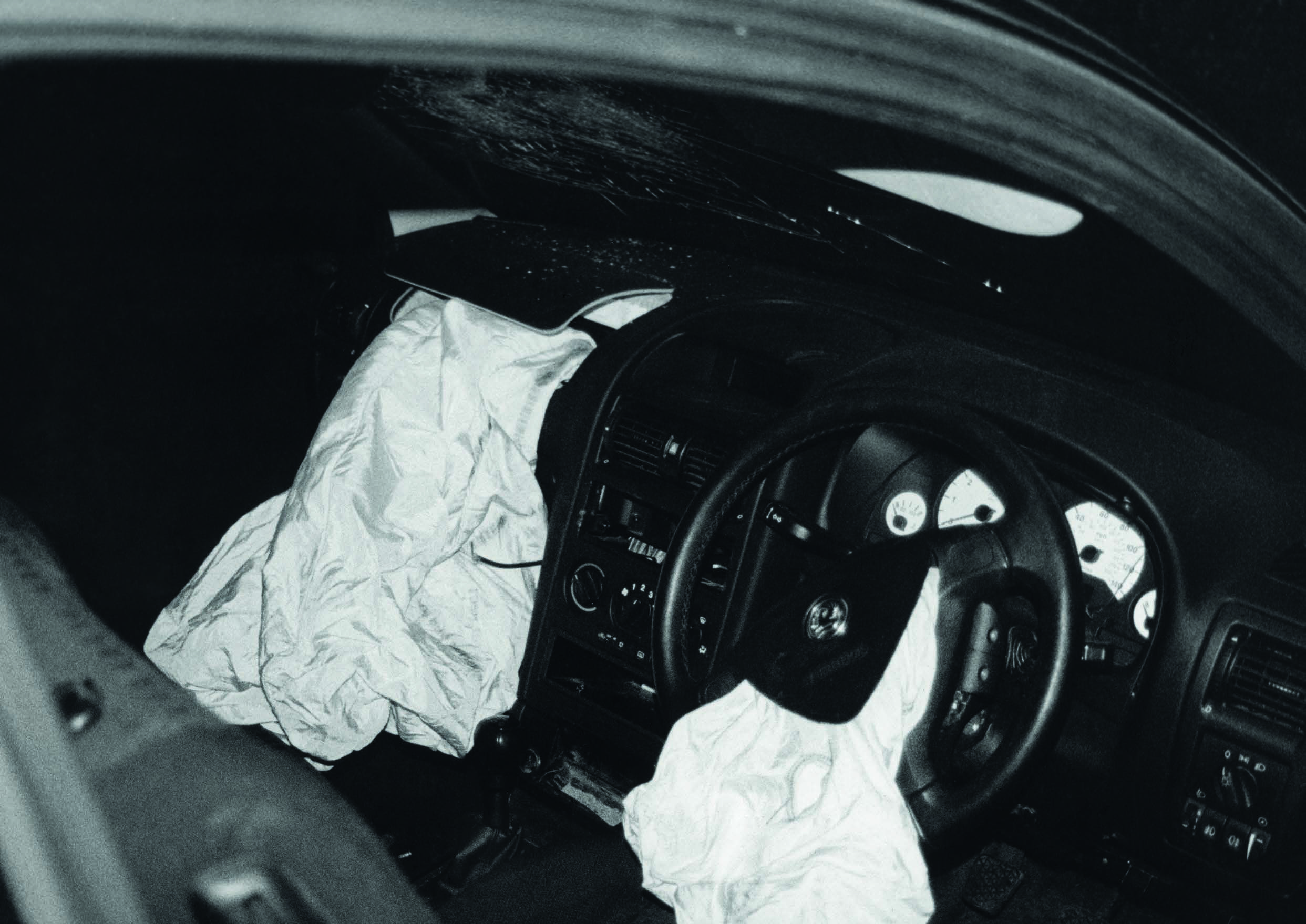
Are there any other icons of death in the book?
There’s another Hell scene in the book. We were searching quite a lot, looking at how death can control people, and if you look at early representations of death and Hell and the devil, it was always portrayed as a black man. So, we incorporated one scene by an unknown painter that sits in a museum in Lisbon—it’s a famous painting that depicts Hell. The devil is depicted as the black community, which again, is a method of controlling people, persuading people to think in a certain way.
There’s the man with two penises and the woman with three breasts. He’s this mythical creature we created that’s really about sex and death and controlling people through sexuality.
So, The Death Book is a pretty natural step for you, having done a lot of erotic work with Baron Magazine and exploring sexuality.
It’s quite uncanny how similar sex and sexuality—their historical discourse—is to death. People use sex to control people and people use death to control
How did you get the letters from Danny Rolling?
That was another person I revisited from when I was a student. I was obsessed with GG Allin, the lead singer of The Murder Junkies, and found him in lots of my research sources during that period of time. He’s the ultimate masochist really, so I was always intrigued by him. We contacted his brother Merle Allen, and Merle Allen had all these letters from serial killers that we wanted to include in the book.
Overall, how do you think death portrayed in Western society thematically?
The main thing we discovered is that we don’t know what death is. It’s been used as a moral compass to control people—that’s definitely something I’ve experienced being gay and we explore that quite a lot throughout the book. And there are, from Edith’s perspective, personal images made from her experience with death, her mother dying. It’s really looking at death from a naive perspective—but I think, in conclusion, we’re always naive about it.
'The Death Book' is available now at the office Newsstand.
Photos by Bill's Playhouse and Edith Bergfors; courtesy of the artists and 'The Death Book'.
